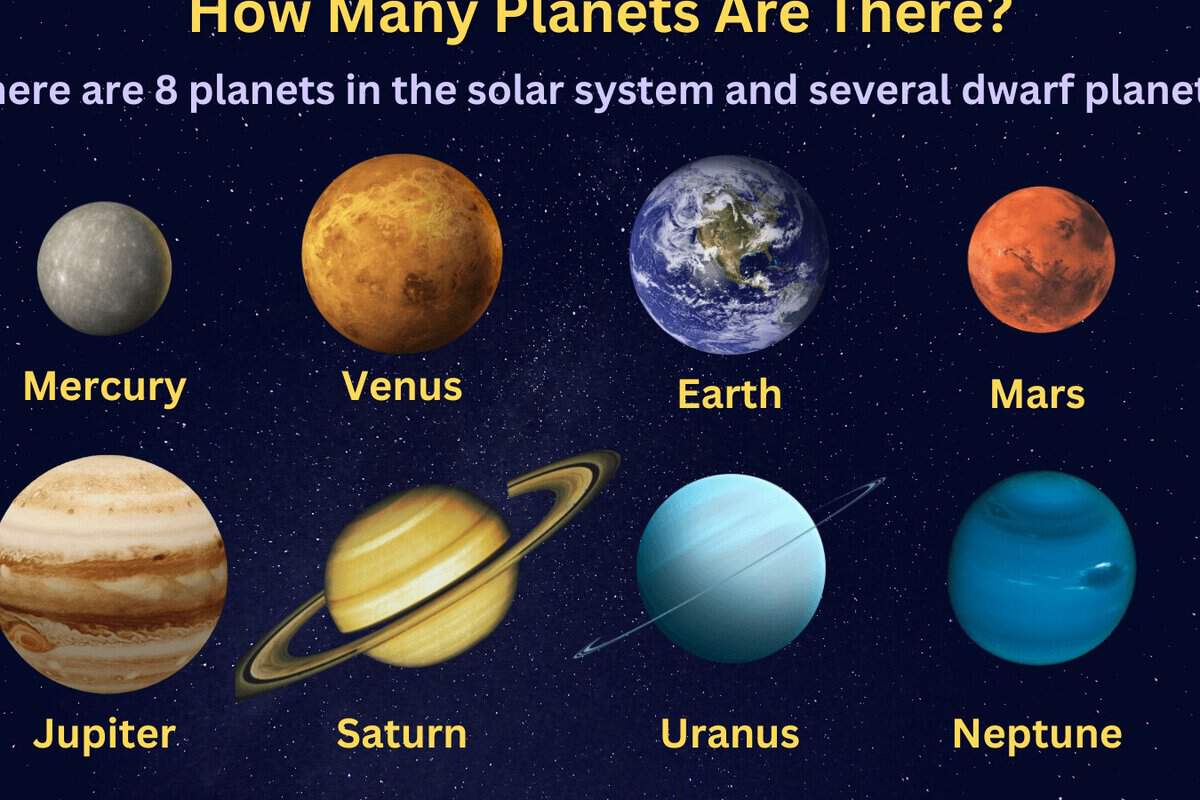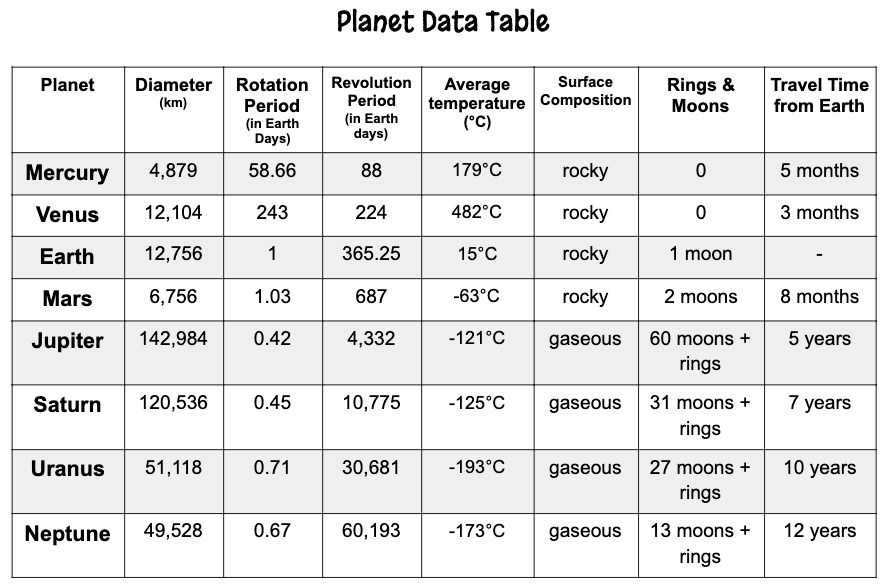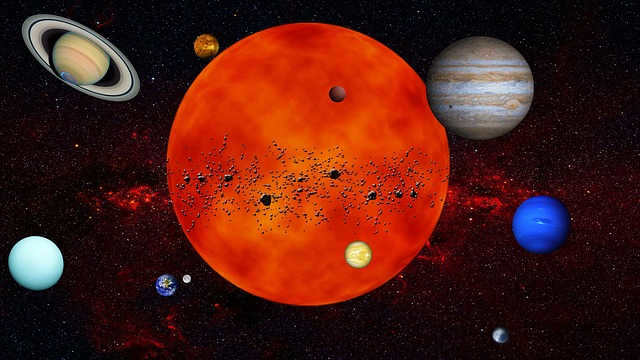
In the past, our ancestors only associated the solar system with the concept of the universe. Nowadays, we are aware that the solar system is minuscule in comparison to the galaxy and that the universe is truly vast, stretching beyond our wildest imagination.
Scientists are actively gathering information about the planets, delving into their origins and development. They are proposing increasingly audacious hypotheses, organizing exploratory missions, and even making plans to establish the first human colony on Mars within a few decades.
What is the Solar System
The Solar System is a vast collection of celestial bodies, including massive planets, small dwarf planets, satellites, asteroids, and nebulae, all situated within the Milky Way galaxy. At the heart of this system lies the Sun, a radiant star that illuminates and governs the surrounding space.
Encircling the Sun are 8 prominent planets, each accompanied by their own moons, and an array of smaller celestial objects such as asteroids, dwarf planets, comets, space debris, and cosmic dust. The names of these planets are derived from ancient Greek and Roman mythology, lending a sense of historical significance to the celestial bodies in our Solar System.
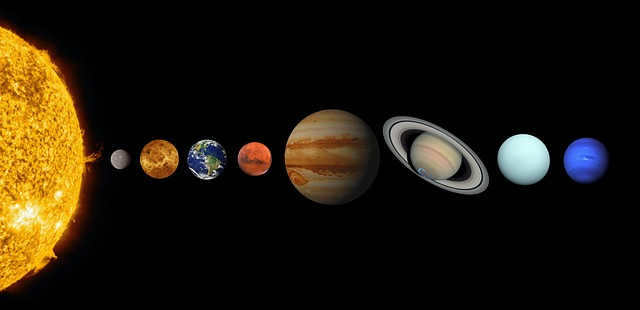
Origin
Currently, there exist at least twelve scientific hypotheses regarding the origin of the planets within the solar system and the system itself. The most widely accepted theory is the nebular concept, first proposed by the German philosopher Kant in 1755.
The fundamental notion behind this theory is that our star system formed approximately 4.6 billion years ago from a vast cloud of gas and dust.
According to the nebular hypothesis, the Sun and its surrounding planets originated from the compression of a hydrogen cloud due to its intense gravitational forces. It is believed that the star itself took shape over a span of around 10 million years.
The remaining components of the system emerged over the course of several hundred millennia. The newest formations include celestial bodies such as moons and asteroids.
Watch the video: the formation of our solar system
Discovering and exploring the solar system
For centuries, the mysteries and enigmas of the cosmos have captivated humanity. Even in ancient times, navigators like the Scandinavian Vikings were aware of the planets’ positions in the sky and used them to navigate the seas and oceans.
However, it was not until the seventeenth century, with the contributions of great scientists like Galileo, Newton, and Kepler, that the scientific community officially embarked on the journey of space exploration. These pioneers were the first to propose the idea that each planet in the solar system follows its own orbit as it revolves around the Sun.
A groundbreaking event in the history of astronomy was the invention of the prototype of contemporary telescopes by Galileo Galilei. In 1610, he became the first person to identify Jupiter on a starry sky map. Subsequently, numerous other celestial objects were discovered, and the sequence and quantity of planets were established.
Isn’t it fascinating? Throughout the centuries, the answer to the question of how many planets exist in our solar system has undergone multiple revisions, and currently, their count stands at 8.

The Soviet Union launched the initial spacecraft in 1950, followed by the United States in 1960. Yuri Gagarin made history in 1961 as the first human to orbit the Earth, paving the way for further exploration of the Moon, Venus, and the enigmatic Red Planet in the years to come.
By 1977, the Voyager-1 and Voyager-2 probes had captured remarkable images of Jupiter and Saturn’s surfaces, providing unprecedented insights into these gas giants.
In 2006, the New Horizons space mission embarked on a remarkable journey through the vast expanse of the cosmos. Over the course of a decade, a fleet of multiple vehicles valiantly traversed a staggering distance of 5 billion kilometers, ultimately coming within a mere 12,500 kilometers of the enigmatic Pluto. Fast forward to the year 2020, and we witness yet another groundbreaking feat as an artificially intelligent robotic explorer gracefully touched down on the crimson surface of Mars. This extraordinary mission entailed the meticulous collection of soil and sediment samples, all in the fervent pursuit of potential traces of extraterrestrial biological activity.
As a result of the recent reclassification of Pluto, numerous amateur astronomers are incorrectly stating the total number of planets. So, how many planets are there actually? Is it eight, nine, or maybe even eleven? Let’s analyze the planets in chronological order.
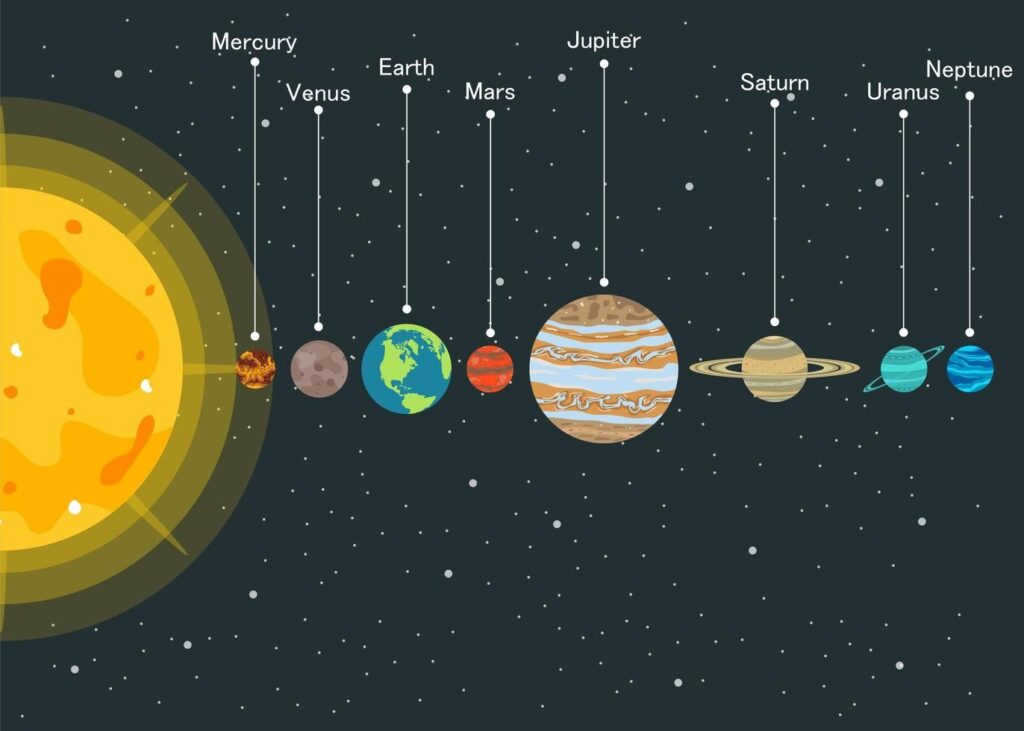
Mercury is the closest planet to the Sun
Mercury is the closest planet to the Sun. It can be challenging to observe in the sky, but it is still possible. It typically appears near the Sun before sunrise or just after sunset.
Scientists classify Mercury as part of the Earth group, and it is the smallest and fastest orbiting planet. It completes one full rotation around the Sun in 88 days. Within this period, the planet only manages to rotate around its own axis 1.5 times.
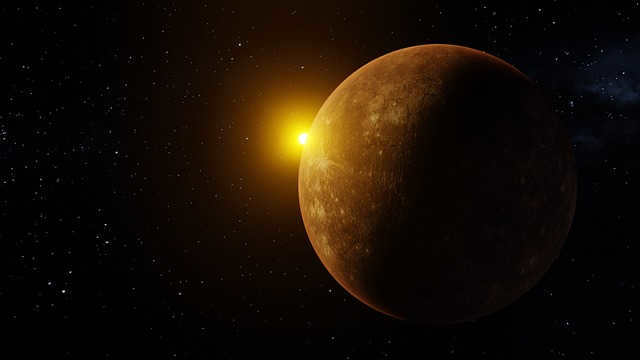
One of the fascinating characteristics of Mercury is its unstable orbit. Recent research indicates that this planet experiences fluctuations in its speed of movement, distance from the Sun, and position in space.
The majority of Mercury is comprised of a dense iron core. Above it lies a relatively small layer of solid rock, which forms the planet’s surface. There is virtually no atmosphere on Mercury, resulting in significant temperature variations – from -180 degrees Celsius (on the dark side) to +430 degrees Celsius (on the sunny side).
Similar to numerous other celestial bodies within our solar system, Mercury exhibits a intricate terrain that has been shaped by an abundance of impact craters. A multitude of visual records depict how its surface is adorned with a vast array of boulders, stretching across thousands of kilometers in length and reaching heights of up to two thousand kilometers.
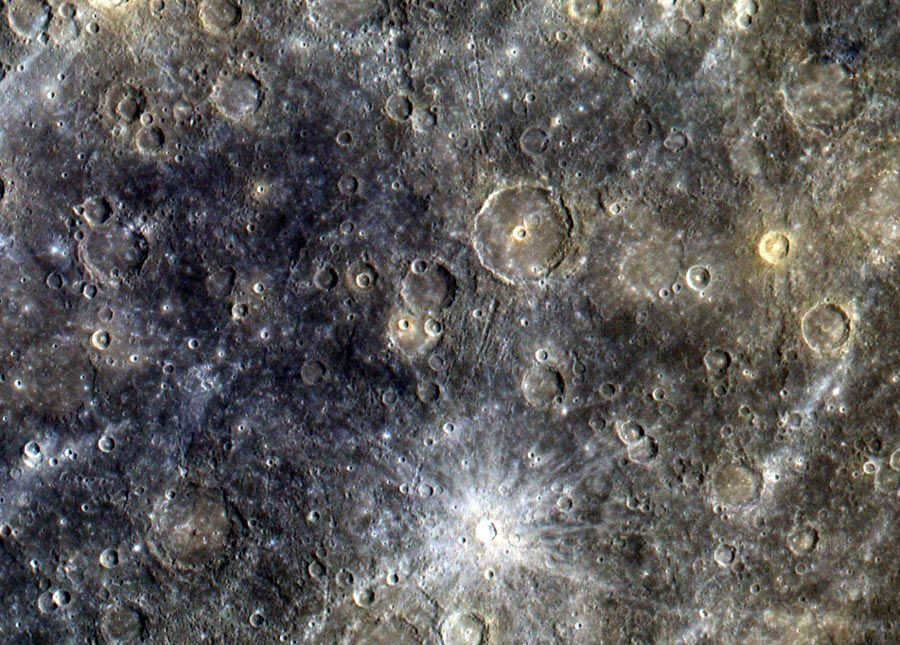
Venus: The Second Planet from the Sun
Venus holds a prominent position as the second planet in our solar system. It is a part of the Earth group of planets and is located at a relatively close distance to our own planet. Dating back to ancient Rome, our ancestors were able to observe Venus and study its movement. Over time, significant scientific data has been collected, leading to a revised understanding of Venus as more than just Earth’s twin sister.

Venus has a slow rotation speed, with a day lasting 243 Earth days. It does not have any natural satellites and its lack of axial tilt means there are no changes in seasons. The planet’s surface is covered by a dense atmospheric layer that is composed of 96.5% CO2, leading to a greenhouse effect.
In 2006, the Venera Express spacecraft was launched to conduct a study of Venus. It successfully entered the planet’s orbit in 2013 and carried out a research mission that lasted for several years. During this time, it was able to document over a thousand volcanoes and rock formations that spanned more than 20 thousand kilometers.
According to a group of esteemed scientists, Venus is believed to have had multiple oceans in the past that evaporated due to a significant rise in temperature caused by a comet collision.
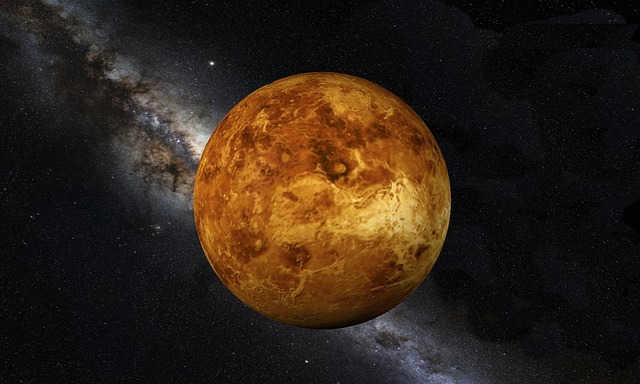
Earth: The Third Planet from the Sun
Earth stands out as the sole planet in our solar system with a surface that is 70% covered in water, while the remaining 30% is comprised of continents. An additional distinguishing characteristic of our planet is the presence of tectonic plates within its mantle, whose movement brings about significant changes in the planet’s topography and landscape.
The Earth’s noticeable axial tilt angle is responsible for the rotation of seasons on the planet. A single day on Earth lasts for 23 hours, 56 minutes, and 4 seconds. It takes 365 days, 5 hours, 48 minutes, and 46 seconds for the Earth to complete one revolution around the Sun.
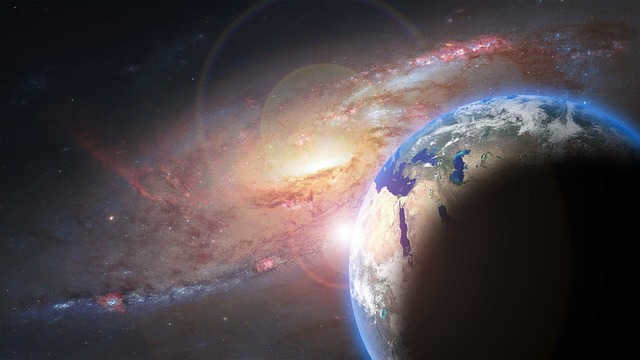
The planet Earth possesses a natural satellite, known as the Moon, which becomes visible in the sky as the Sun descends. This celestial body came into existence approximately 4.54 billion years in the past. The atmosphere played a crucial role in enabling the development of intricate life forms on this planet. The atmosphere is comprised of multiple layers.
It is a well-known fact that the original composition of the Earth’s atmosphere consisted of hydrogen, methane, carbon dioxide, water vapor, and ammonia. However, with the passage of time, these elements have largely dissipated into space.
Mars is the fourth planet in our solar system
Observations of the crimson celestial neighbor date back to ancient Egypt during the reign of the first pharaohs. Early astronomers in Egypt were able to precisely locate Mars between Jupiter and the asteroid belt, and they also discovered its retrograde motion.
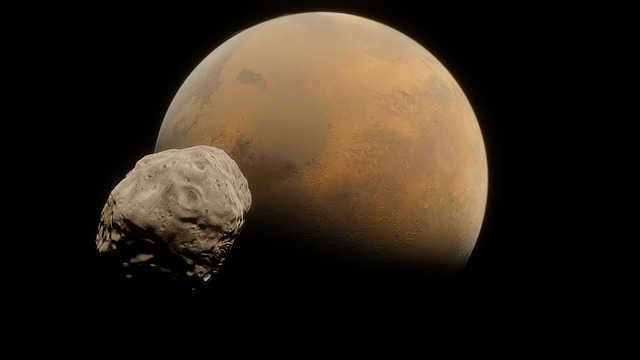
Mars is approximately half the size of Earth in terms of radius, with an equator length of 21,433 km and a total area of 144.37 million square meters. This accounts for only 28.3% of Earth’s surface area.
One notable characteristic of Mars is its lack of a dense atmosphere, resulting in average annual temperatures ranging from -50 to -60 degrees Celsius.
Mars is also home to two natural satellites, Deimos and Phobos. Scientists believe that Mars holds the most promise for future development and colonization. However, the construction of the first settlements will present challenges such as high levels of radiation, insufficient oxygen for human survival, and intense dust storms that can easily sweep away anything in their path.
It’s a big deal! Mars is the proud host of the tallest mountain among all the planets in the solar system – the Olympus volcano. Standing at a staggering 27 kilometers, it towers over Mount Everest by a whopping three times.
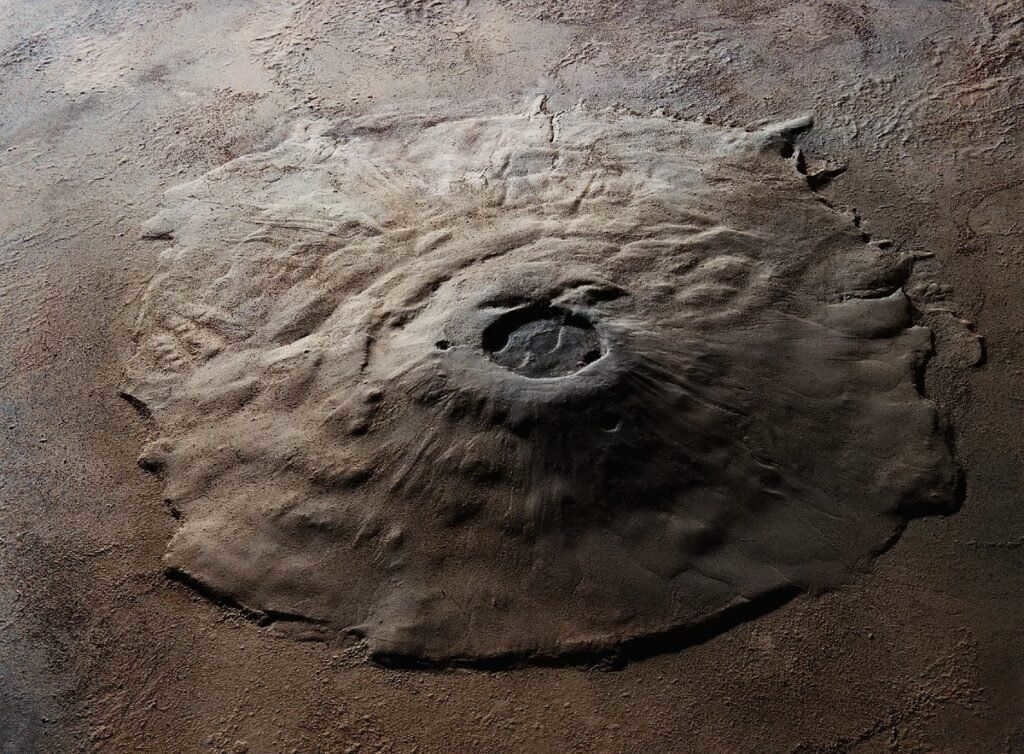
Jupiter is the fifth planet from the Sun.
Jupiter, the largest object in our solar system, is the fifth planet from the Sun and a true gas giant. Throughout its existence, it has acquired a vast number of satellites.
Currently, it has a total of 79 satellites, with the most well-known ones being: Io, Ganymede, Europa, and Callisto. Because of its immense size, Jupiter is easily visible in the night sky.
Because of its immense size, Jupiter is easily visible in the night sky. It was referred to as the Star of Zeus during ancient times.
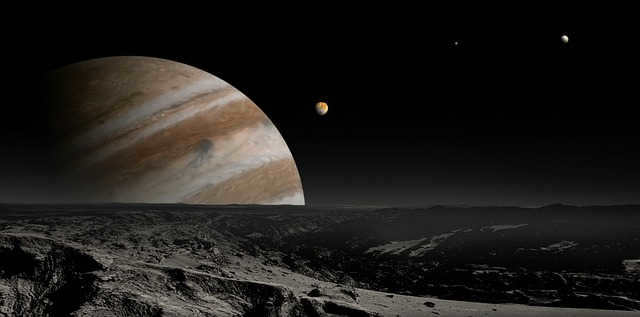
Based on the information available, Jupiter is composed of an atmosphere, multiple layers of dense rocks, and a rocky core surrounded by liquid metallic hydrogen. Its magnetic field is disk-shaped with flattened ends.
Jupiter orbits the sun on an elliptical path. It takes 12 Earth years to complete one revolution.
In 1979, the existence of Jupiter’s rings was discovered through images captured by the Voyager-1 probe. However, these rings can only be seen from a close distance. The planet’s atmosphere is primarily made up of 75% hydrogen and 24% helium. Unfortunately, it is impossible to gather information about the composition of Jupiter’s surface because landing any equipment on the gas giant is not feasible.
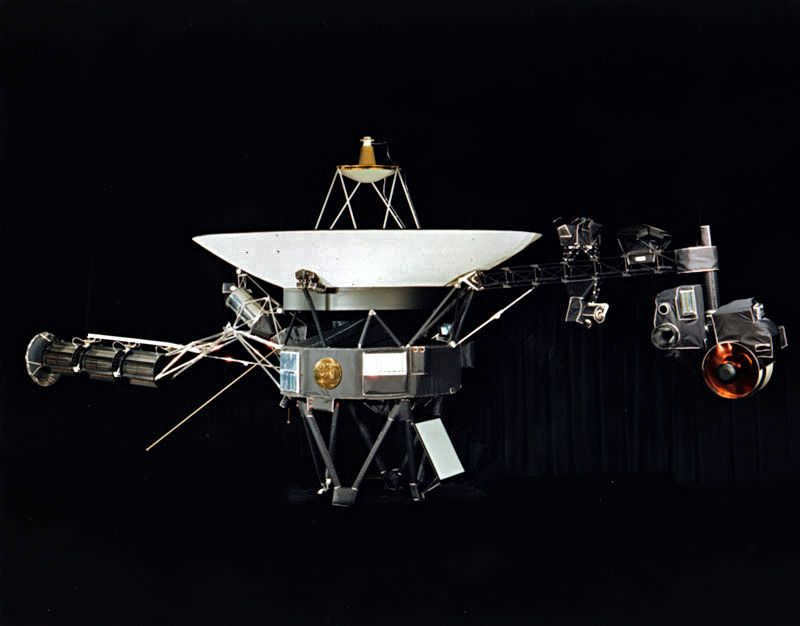
Some scientists compare Jupiter to a scaled-down model of the solar system. It is a tumultuous world, with tempestuous winds reaching speeds of up to 160 meters per second, and its upper atmosphere is adorned with clouds of ammonia.
Saturn, the sixth planet from the Sun.
Saturn, the sixth planet from the Sun, holds the distinction of being the second largest celestial body in the known part of our galaxy, surpassed only by Jupiter. Observers with a passion for astronomy can easily identify Saturn by its iconic, unmistakable rings.
In recent years, researchers have gained a considerable amount of knowledge about Saturn, thanks in part to the numerous probes and spacecraft that have been dispatched to its orbit.
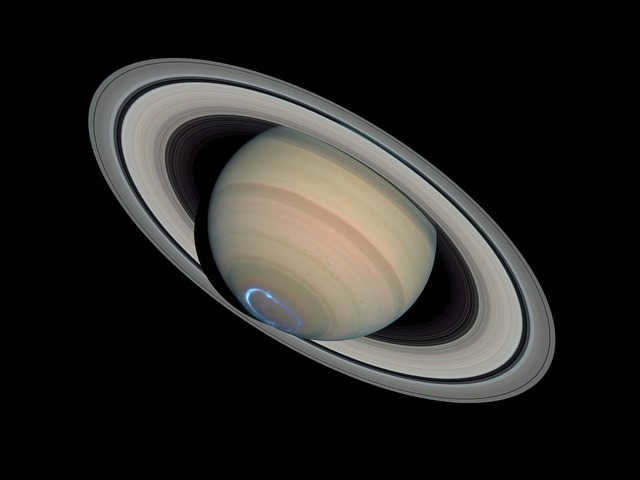
Due to its classification as a gas giant, Saturn’s surface exhibits a low density. Its outer layer consists primarily of gaseous molecular hydrogen infused with helium. Below this lies a mixture of liquid helium, metallic hydrogen, and various volatile substances that remain unknown to scientists on Earth. At the core of the planet lies a solid, intensely hot center.
The atmosphere of this gas giant is composed of 96% hydrogen and 3% helium. On the surface of Saturn, powerful winds continuously blow at speeds reaching up to 500 meters per second. Combined with the heat emanating from the planet’s glowing core, these winds give rise to distinct golden and yellow bands that are clearly visible even from outer space.
Uranus is the celestial body that is positioned seventh in the solar system, counting from the Sun.
When it comes to its physical characteristics, Uranus takes the fourth spot in terms of mass and the third spot in terms of diameter. The official discovery of Uranus occurred in the year 1781. Despite being easily visible from Earth, scientists initially mistook it for a comet and later for a star that had already died out.

Named after the Greek god and father of Saturn, Uranus has a unique rotation period of 17 hours and 14 minutes (in Earth minutes). It takes 84 years for Uranus to complete one orbit around the sun. This planet is known for its extreme axial tilt, which leads to distinct seasons.
The atmosphere of Uranus primarily consists of helium and hydrogen, with additional amounts of ammonia and methane. Interestingly, the presence of methane is what gives the planet its distinct blue glow. With surface temperatures reaching as low as -224 degrees Celsius, Uranus is the coldest object in our solar system.
In the equatorial regions, the wind blows in the opposite direction to the planet’s rotation. As you move further from the equator, the velocity of air currents escalates, reaching a staggering 900 km/h in massive vortices.
It is postulated that within Uranus lies a compact rocky nucleus enveloped by a mantle comprised of ammonia, methane, and water ice. Based on the most recent data, the planet possesses 13 gaseous rings and 27 moons, with the most prominent one being named Titania, which exudes a captivating charm.
Neptune is the planet that is eighth in line from the Sun
When you arrange all the planets in a row, Neptune is the one that is farthest away from the Sun. It belongs to the group of ice giants, along with Uranus. This celestial body got its name from the god of the sea and oceans, due to its unique and vibrant blue color.
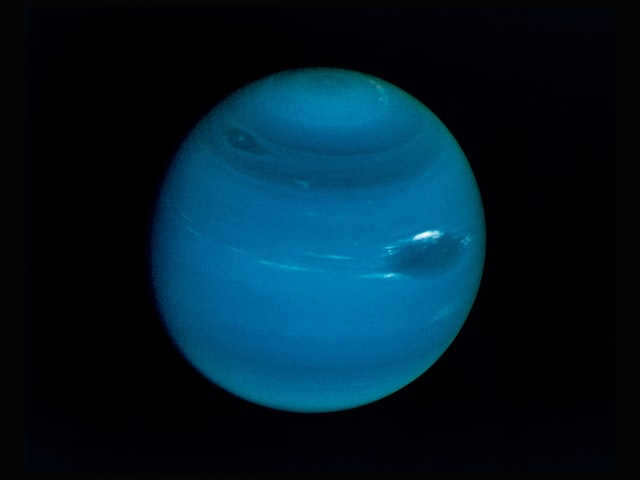
The distance between Earth and Neptune measures approximately 4.3 billion kilometers. Due to this vast distance, the planet is not visible to the naked eye and can only be observed through a telescope with a minimum magnification of 200 times.
Neptune follows an almost perfect circular orbit, completing a full revolution around the sun in 164 Earth years. Like other planets, it also rotates on its axis, which is inclined at an angle of 28.3 degrees. This inclination gives rise to seasons on Neptune, causing significant changes in weather conditions.
The upper layers of Neptune’s atmosphere consist of a mixture of hydrogen and helium, while the lower layers are composed of numerous clouds containing hydrogen sulfide and ammonia. The icy surface of the planet is similar in composition to uranium, with its primary components being ammonia and methane in a liquid state.
To put it simply, the icy exterior of Neptune is not quite what it seems. Rather than a solid surface, it is actually a vast expanse of boiling ocean, with a searing core temperature of +5500 degrees Celsius lurking beneath.
Not only does Neptune boast an impressive collection of 5 rings, but it also plays host to 14 satellites. Among these, the largest and most notable is Triton, which happens to have a perfectly spherical shape.
A Comparative Analysis of Planets within the Solar System
Varieties of Planets in the Solar System
Within our solar system, there are an additional five dwarf planets alongside the eight primary planets that were previously discussed. These planets are classified into two categories based on their physical characteristics: terrestrial celestial bodies and “gas giants”.
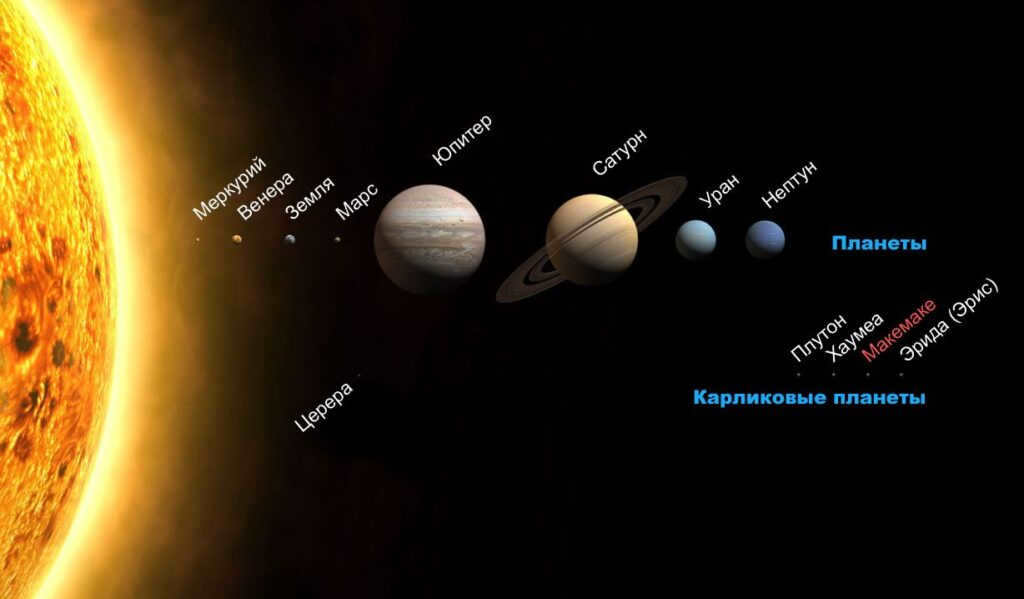
Terrestrial planets in our Solar System
By comparing the planets, scientists have been able to classify them into different groups. One particular group consists of celestial bodies that not only appear similar to Earth, but also have similar structures. These planets are known as the “terrestrial” planets.
The terrestrial group includes Earth, Mars, Venus, and Mercury. Their similarity can be attributed to their structure: a solid core, a mantle, and a lithosphere. The similarities in structure are a result of similar conditions and formation times.

Let’s talk about the main characteristics of the rocky planets:
- They possess a solid outer layer along with an atmosphere enveloping their surfaces.
- There are either a few or no natural satellites orbiting around them.
- Unlike Saturn and its famous rings, these planets lack any gas rings.
- Within the interior of each rocky planet lies a metallic core, which is surrounded by a mantle.
It is believed that the terrestrial planets in our solar system formed shortly after the Sun. Initially, they began as clusters of dust particles scattered throughout space. Over time, the particles gradually came together and merged, eventually forming the solid objects we know today.
The gas giants are the celestial bodies in the solar system
Astrophysicists use the term “gas giant” to describe the planets that are made up of helium and hydrogen. This term was coined by science fiction writer James Blish in 1953.
Neptune, Uranus, Jupiter, and Saturn are all part of this group of space objects. These planets have large volumes and relatively low density.
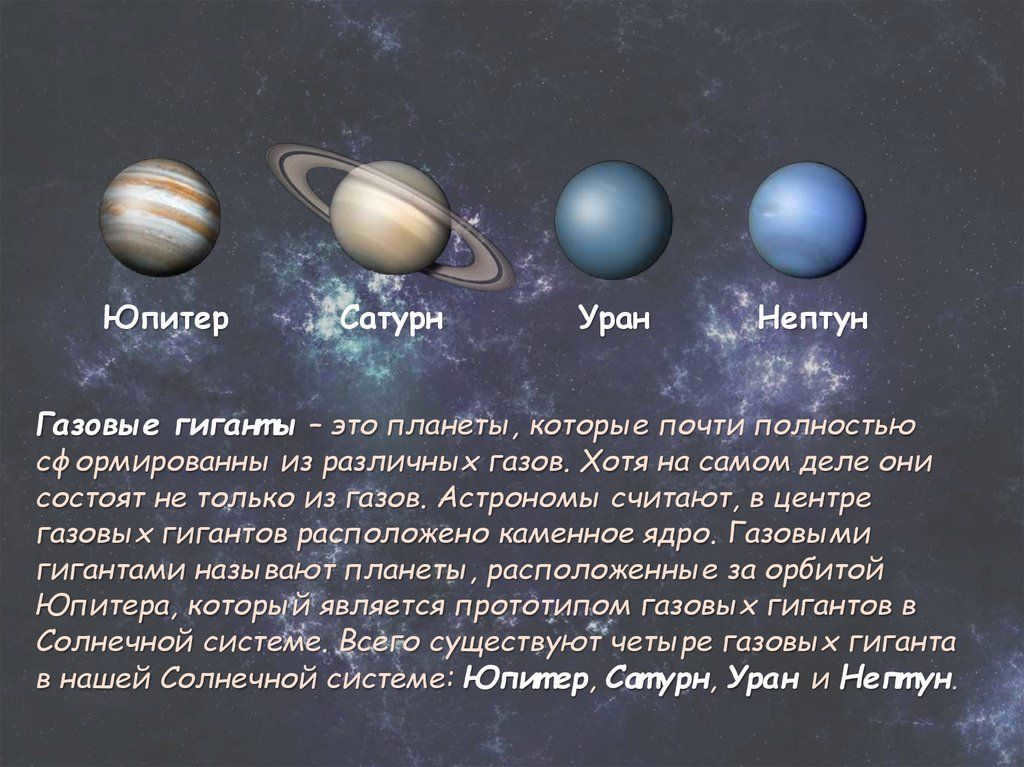

Gas giants are composed of helium, methane, hydrogen, ammonia, and other light, volatile substances. Other notable characteristics of these planets include:
- The atmosphere transitions to a liquid state due to increasing pressure near the planet’s surface;
- There is no clear boundary between the atmosphere and the ocean;
- Gas giants have a solid core that is heated to extremely high temperatures;
- These planets have a large number of satellites, some of which are larger than certain dwarf planets;
- Rings, like those seen on Saturn, are also present.
Enormous gas celestial bodies possess an atmosphere where tempestuous winds, with velocities reaching 500-900 meters per second, reign supreme. On average, the magnitude of the planets in our solar system (these colossal entities) is no more than one thousandth of their overall volume.
Solar system’s diminutive planets
The International Union of Astronomers defines “dwarf planets” as celestial bodies that are spherical in shape and orbit the Sun at varying speeds.
Their “dwarfism” can be attributed to their diminutive mass and the complete or partial absence of gravity.
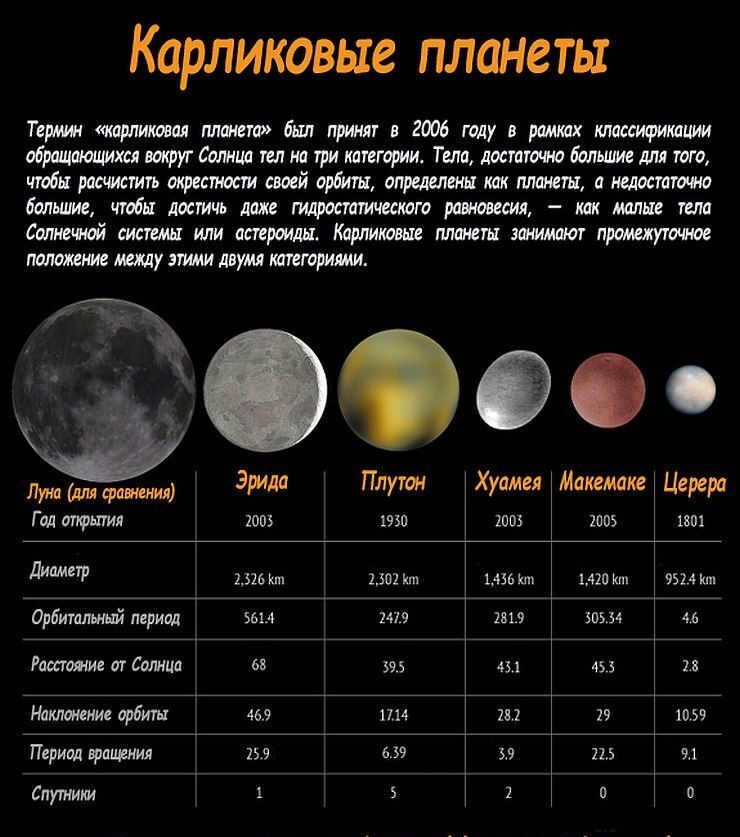
The distinctive features of dwarf planets are as follows:
- They have a well-defined orbit around the Sun;
- They have a relatively small mass that gives them their unique shape;
- They are not moons of other planets;
- Due to their weak gravitational pull, space debris is not cleared from their orbit and surface.
At present, the recognized dwarf planets include: Haumea, Erida, Makemake, Pluto, and Ceres. However, many scientists believe that this is only the tip of the iceberg and that there are many more yet to be discovered.
It is challenging to ascertain the veracity of this claim, as the majority of dwarf planets reside at a significant distance from the Sun, within the Kuiper belt, with only Ceres “concealed” in the asteroid belt near Jupiter.
Planetary dwarfs
The introduction of cutting-edge technology and the continuous deployment of spacecraft have enabled the accumulation of a wealth of data regarding planetary dwarfs.
Pluto, the biggest entity in the Kuiper belt, was first found in the far-off year of 1930. Initially, it was classified as a planet, a status it held until the start of the 20th century. However, because of its relatively small size and weak gravitational force, Pluto was unable to rid its orbit of the many asteroids and debris, causing it to be downgraded to a “dwarf”.
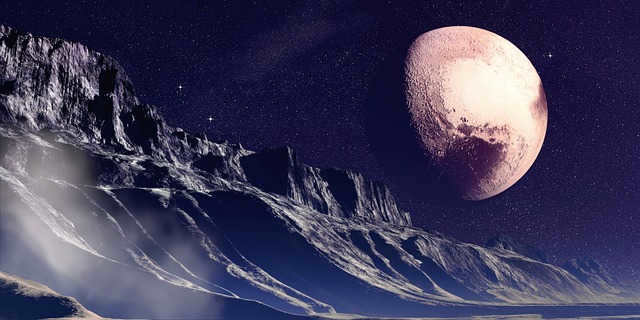
Pluto has a surface composed of methane and nitrogen ice rocks. The presence of hydrocarbon impurities gives it a distinct brown color.
The atmosphere of the planet is thin and primarily consists of methane-hydrocarbon vapor.
The orbit of the “dwarf” resembles an elongated ellipse at the poles.
Scientists have identified five satellites orbiting Pluto, which are named after mythological creatures associated with the underworld in ancient Roman legends: Styx, Hydra, Charon, and others.
Ceres
Ceres, the sole dwarf planet outside the Kuiper belt, distinguishes itself in both size and mass, placing fifth among its celestial counterparts. Notably, Ceres earned the distinction of being the first object discovered within this group, with its identification dating back to 1801. This celestial body derives its name from the Roman goddess associated with fertility.

Ceres is composed of clayey rocks containing a limited quantity of ice, creating its unique surface. Below the firm exterior lies an icy layer enveloping a solid rocky nucleus. The object’s atmosphere consists of sparse water vapor. Ceres does not possess any natural satellites.
Makemake was found at around the same time as its “neighbor” Erida. The celestial body was given its name as a tribute to the deity of procreation from Easter Island.
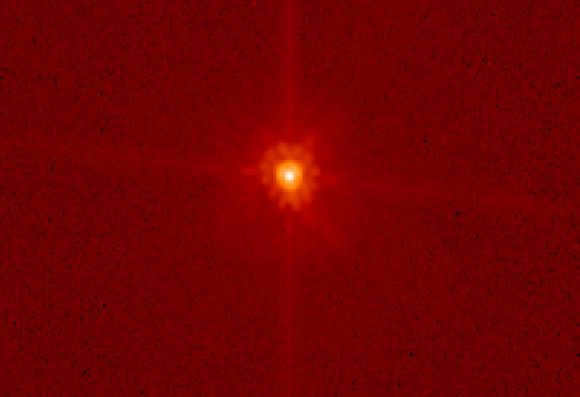
The study of Makemake has been limited due to its significant distance from both the Earth and the Sun. Despite extensive research efforts, scientists have not yet been able to determine its exact mass and size.
One theory suggests that Makemake ranks fourth in size and fifth in weight among dwarf planets. It lacks a permanent atmosphere.
Makemake’s composition is primarily comprised of evaporating hydrocarbons, while its surface is composed of methane ice. A small moon orbiting this dwarf planet was discovered by NASA a decade ago.
Erida
The name Erida was chosen in honor of the ancient deity of discord. This small celestial body, which is of great interest to astronomers, was first spotted in 2005. Its discovery required a thorough examination and comparison of millions of Kuiper belt images collected over the course of half a century by American scientists.
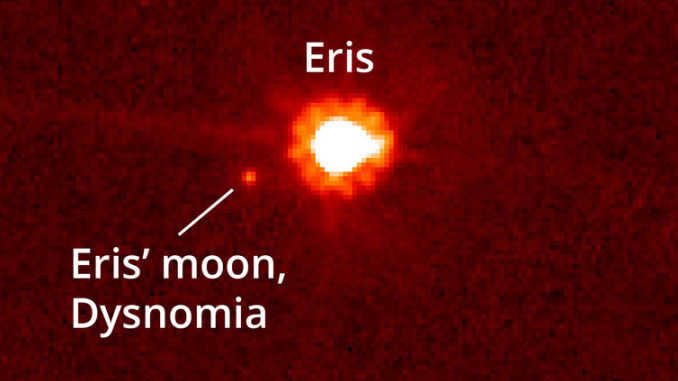
Erida can be found in the farthest reaches of the galaxy. This unique planet is composed entirely of frozen hydrocarbons, which evaporate to create a volatile gas shell. Currently, Erida holds the title of being the largest dwarf planet and is only surpassed in size by Pluto.
Haumea, the fifth member of the group of space objects known as “dwarfs,” was discovered in 2005, a little over fifteen years ago. What sets Haumea apart from the other objects in the group is its remarkably fast axial rotation and its unique elongated shape, reminiscent of an egg laid by a hen.
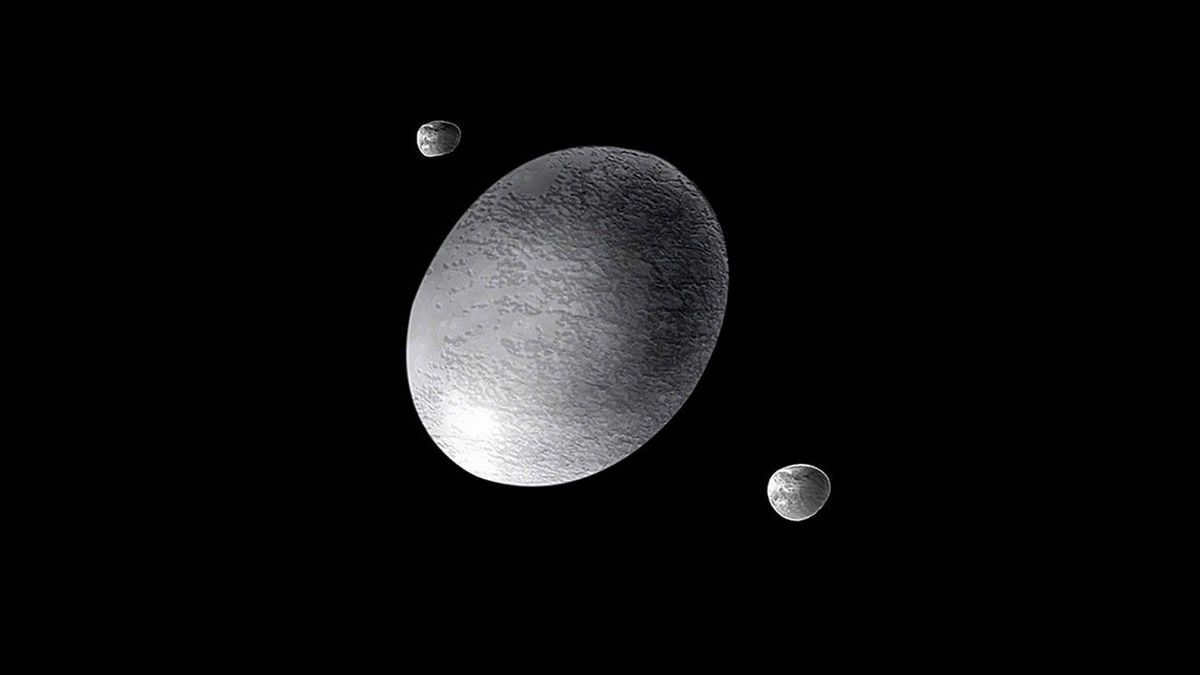
The reason for the unique shape of Haumea is the difference in its transverse and longitudinal dimensions. While its equator diameter is comparable to that of Pluto, its cross diameter is more than twice smaller than Pluto.
Haumea has a distinctive feature of having several gas rings and satellites, which were formed as a result of its collision with an asteroid that was much larger than Haumea in the past. The object’s orbital motion is greatly influenced by the gravitational pull from nearby Neptune.
Due to its significant distance from the hot Sun, Haumea is primarily composed of ice with small amounts of hydrocarbons and various minerals. However, this “dwarf” planet does not have its own atmosphere.
Is there a 9th planet?
Following the reclassification of Pluto as a dwarf planet, the official count of planets in the Solar System stood at 8. However, it is highly probable that this count will soon be revised to include a 9th planet.

Recently, scientists have made a fascinating discovery concerning the orbit of Neptune. They have found previously unidentified celestial bodies moving in their own orbits. After observing these mysterious objects, astronomers have theorized that they may be influenced by the gravitational pull of a planet much larger than Neptune.
One theory suggests that this so-called ninth planet is actually a haphazard collection of comets, space debris, asteroids, and other objects. As of now, the latest data indicates that there are no unidentified celestial bodies beyond Neptune and its moons, or if they do exist, they are too small to be considered a new planet. Only time will reveal the truth.

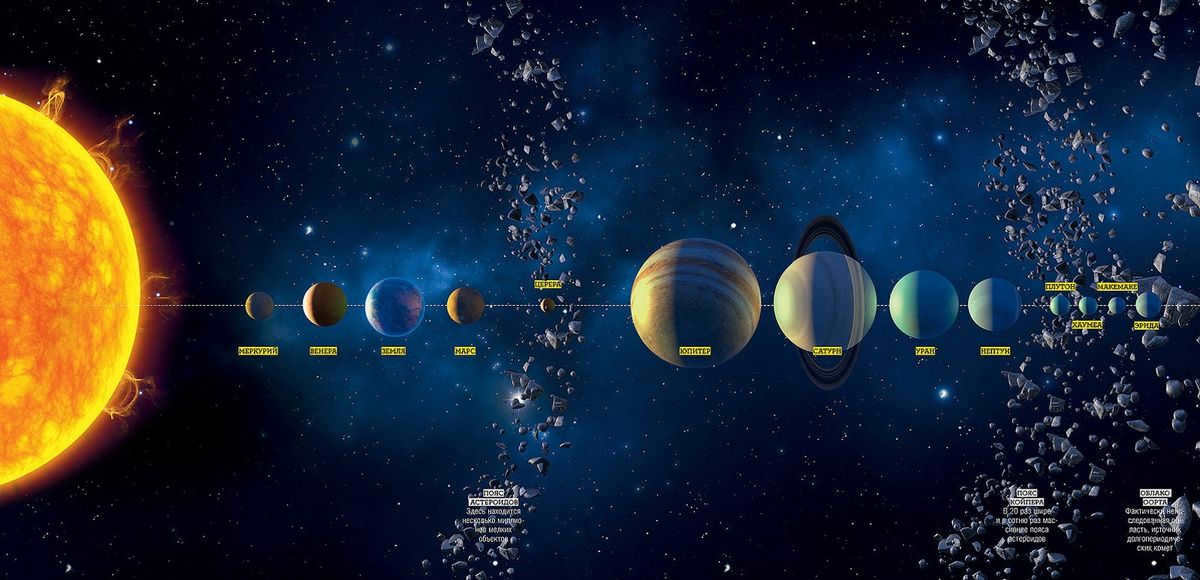
Solar System
Approximately 5 billion years ago, a massive cloud of dust and gas in space initiated the formation of the solar system. The Sun took shape in the central position, with the planets orbiting around it.
From a structural standpoint, our star system can be categorized into two regions: the inner part consisting of the four terrestrial planets and the asteroid belt, and the outer part composed of the four gas giants and objects located beyond Neptune.
Following the reclassification of Pluto in 2006, it is no longer classified as a planet. Instead, a new category of smaller celestial bodies known as “plutoids” has been introduced.

The rocky planets in our solar system
These are a collection of celestial objects distinguished by their high density:

- Mercury is one of the planets in the solar system.
- Venus is another planet in the solar system.
- Earth is a unique planet in the solar system.
- Mars is also a planet in the solar system.
The composition of these planets is largely comprised of solid materials, including rock-forming minerals known as silicates and metallic iron.
The internal structure of the planets in the Earth group consists of an iron-nickel core, a silicate mantle, and a silicate-rich crust with traces of incompatible elements. However, this crust is disrupted by meteorite impacts on Mercury.
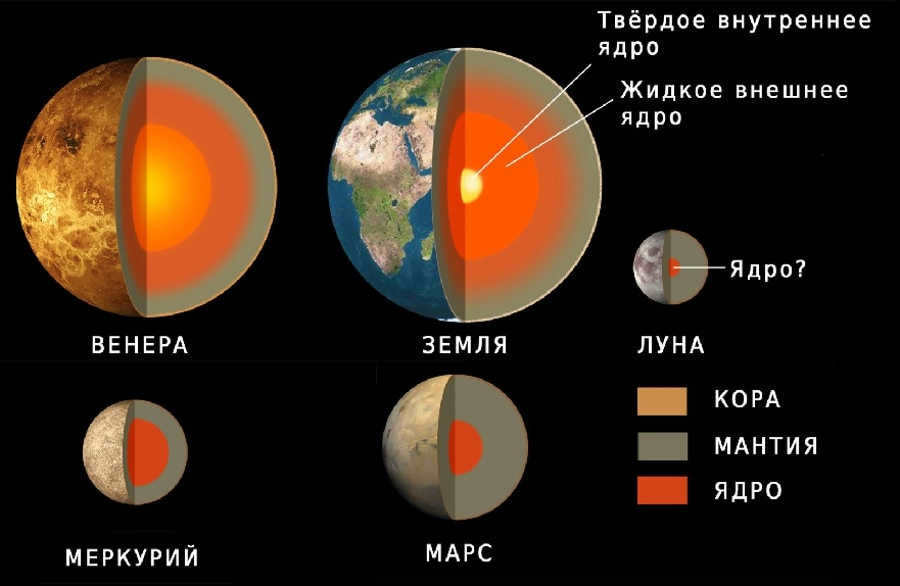
The planets are composed of the following materials:
- Aluminum.
- Iron.
- Oxygen.
- Silicon.
- Magnesium.
- Heavy elements.

The volume of the planets in the outer group, namely Neptune, Saturn, Uranus, and Jupiter, is quite large. However, their low density can be attributed to the presence of ammonia, hydrogen, helium, methane, and several other light gases. It is worth noting that the two farthest celestial bodies among the four contain a higher percentage of ice compared to their neighboring planets.
Here’s an intriguing fact: the mass of the gas giants’ satellites is only one ten-thousandth of their own mass.
The celestial bodies known as dwarf planets in our solar system
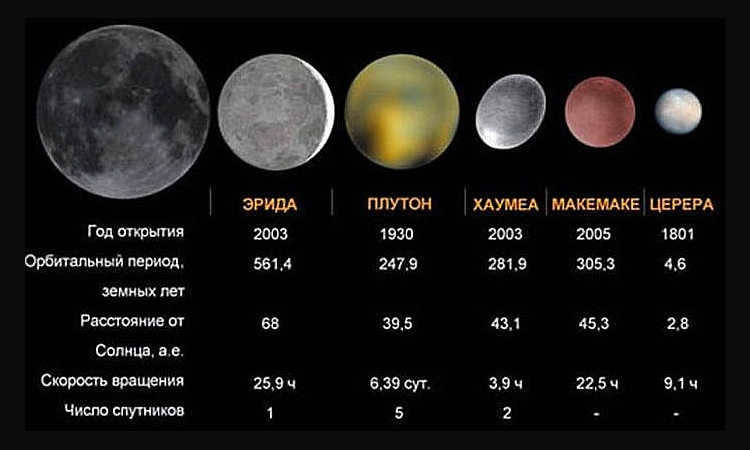
Aside from the eight planets, there exist numerous other celestial entities within the solar system. According to the classification by the Union of Astronomers, some of them are referred to as dwarf planets. These bodies orbit the Sun, possess a spherical shape (due to gravitational forces), lack any satellites, and do not have the ability to attract small objects within their orbit.
The onset of the second millennium A.D. has brought about significant revisions to our understanding of the universe. It turns out that during its initial formation, the solar system had a markedly different appearance.

As an illustration, the inner part of the system might have contained anywhere from 50 to 100 planets, while the outer part was comparatively smaller and denser. Subsequent cataclysmic events resulted in the redistribution of mass and the movement of celestial bodies within the system, a phenomenon that has been observed in the study of star systems in neighboring galaxies. However, this remains a captivating hypothesis that necessitates substantiation through scientific evidence. As of now, our star-planet system remains remarkably stable, and no planetary migration is anticipated for billions of years to come.
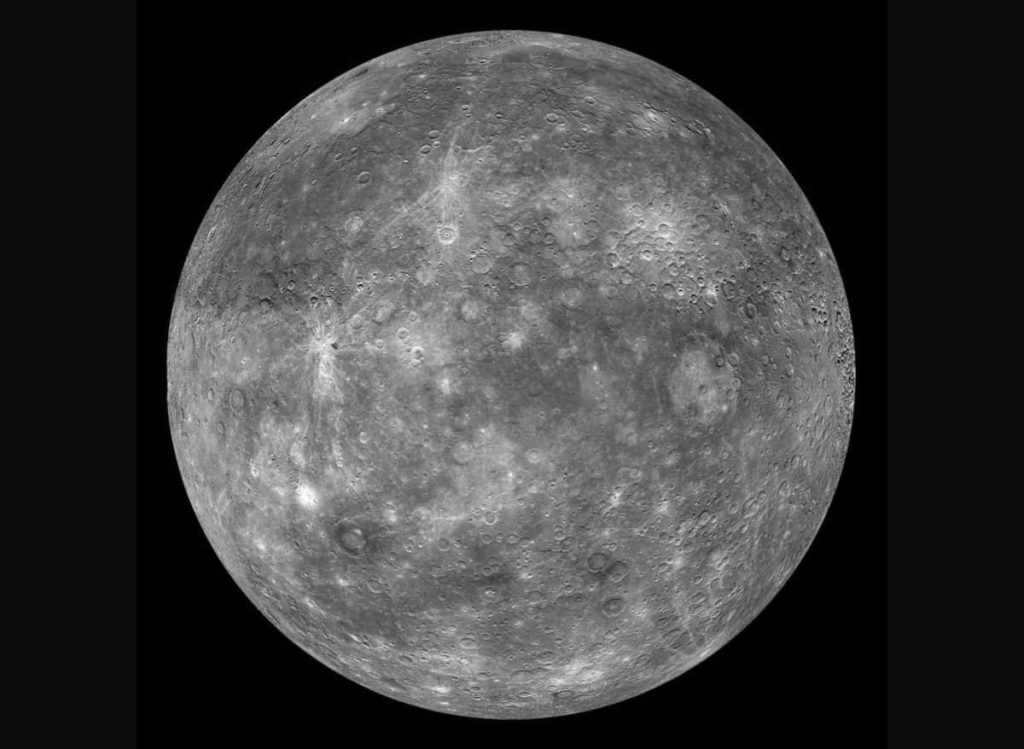
Mercury, the planet closest to the Sun, earned its name due to its incredible speed and agility. It is known as the “Messenger of the gods” and is always on the move.
Mercury has an orbital period of 88 Earth days and a rotational period of 58 days, 15 hours, and 30 minutes. This means that its own axis completes a full rotation in just 2/3 of a Mercurian year. During this time, the planet gets as close as 46 million kilometers to the Sun and travels as far as 69.8 million kilometers away.
Let’s take a look at some of the physical parameters of Mercury:
- Mass – 3.33-1020 tons, which is equivalent to 0.055 times the mass of Earth.
- Volume – 6,083-1019 m3, which is equivalent to 0.056 times the volume of Earth.
- Density – 5427 kg/m3, which is equivalent to 0.984 times the specific gravity of Earth.
- Diameter – 4879.4 km, which is equivalent to 0.383 times the diameter of our planet. Interestingly, this diameter remains consistent both at the poles and near the equator.
- The speed of orbital rotation varies between 38.7 and 56.6 km/sec.
- There are no annual cycles on the planet.
- The temperature on Mercury can fluctuate by up to 620 degrees Celsius.
Mercury has a very thin atmosphere, consisting mainly of atoms brought by the solar wind or ripped from the planet’s surface.
Morphology of Mercury
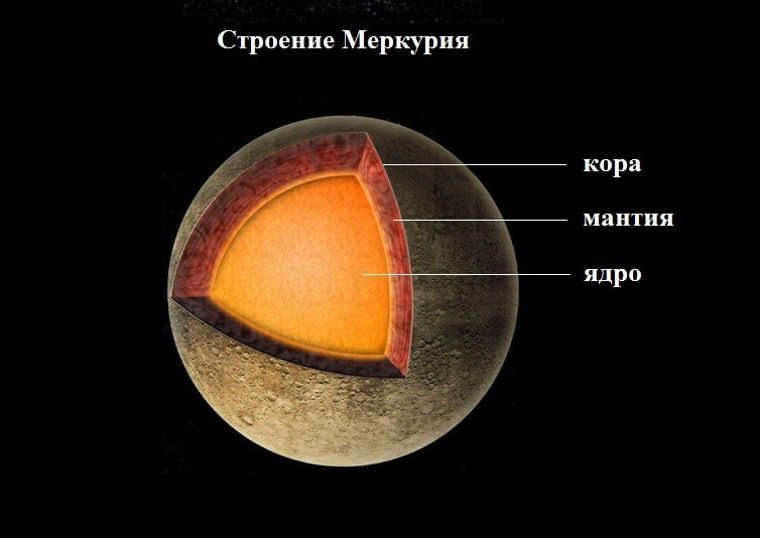
- Mercury has a core made up of liquid iron and nickel, with a high concentration of iron. The core has a radius of 1800 km.
- It also has a silicate mantle, which is about 600 kilometers thick.
- The crust of Mercury has been damaged by meteorite impacts. The thickness of the crust varies according to different sources, with some estimates ranging from 100 to 300 kilometers, while others suggest it is only 15 to 37 kilometers thick.
Venus: The Sun’s Second Planet
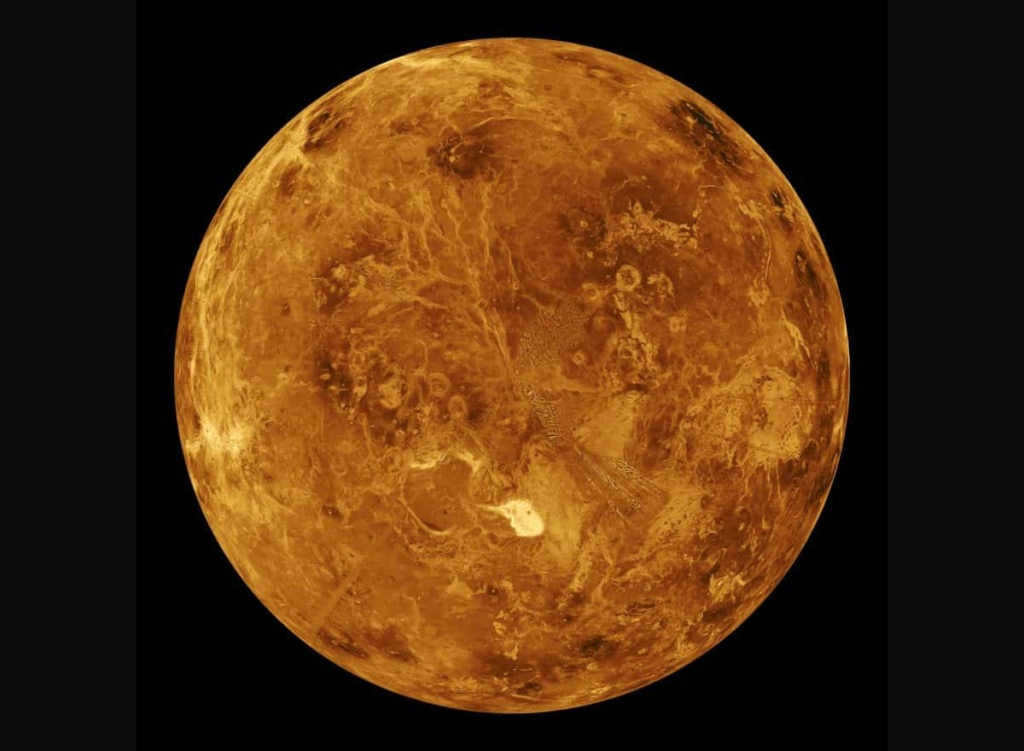
Venus, our closest neighbor, was named after the Roman goddess of beauty and shares many similarities with Earth. Ancient observers actually thought it was two separate celestial objects.
One of the unique characteristics of Venus is its unusual rotation. Unlike other planets in our solar system, it spins in the opposite direction – counterclockwise. It also rotates very slowly, with a sidereal day lasting 243 days and 26 minutes. In contrast, a year on Venus is only 224.7 Earth days long.
- Mass – 4.87-1021 tons = 0.815 times the mass of Earth.
- Volume – 9.38-1020 m3 = 0.857 times the volume of Earth.
- Density – 5243 kg/m3 = 0.951 times the density of Earth.
- The orbital speed is 35 kilometers per second.
- The lack of significant axial tilt prevents the occurrence of seasons on the planet.
- The surface temperature of Venus can reach up to +464 °C.
The atmosphere of our closest “neighbor” is incredibly dense and primarily composed of CO2.
The planet has a typical internal structure, consisting of a crust, mantle, and core. The absence of a magnetic field is the only indication of the solid state of the core.
Earth is the third planet from the Sun

Earth, the largest planet among the inner planets, derives its name from its literal meaning, referring to what is below and without any deification. Nonetheless, it is the only planet that sustains a diverse range of life forms.
Various astronomical parameters contribute to this unique characteristic:
- The Earth completes one orbit around the Sun in 365.25 days.
- A full rotation on its own axis takes exactly 24 hours minus 3 minutes and 56 seconds.
- The Earth is approximately 147 million kilometers away from the Sun, while its average distance is about 152 million kilometers.
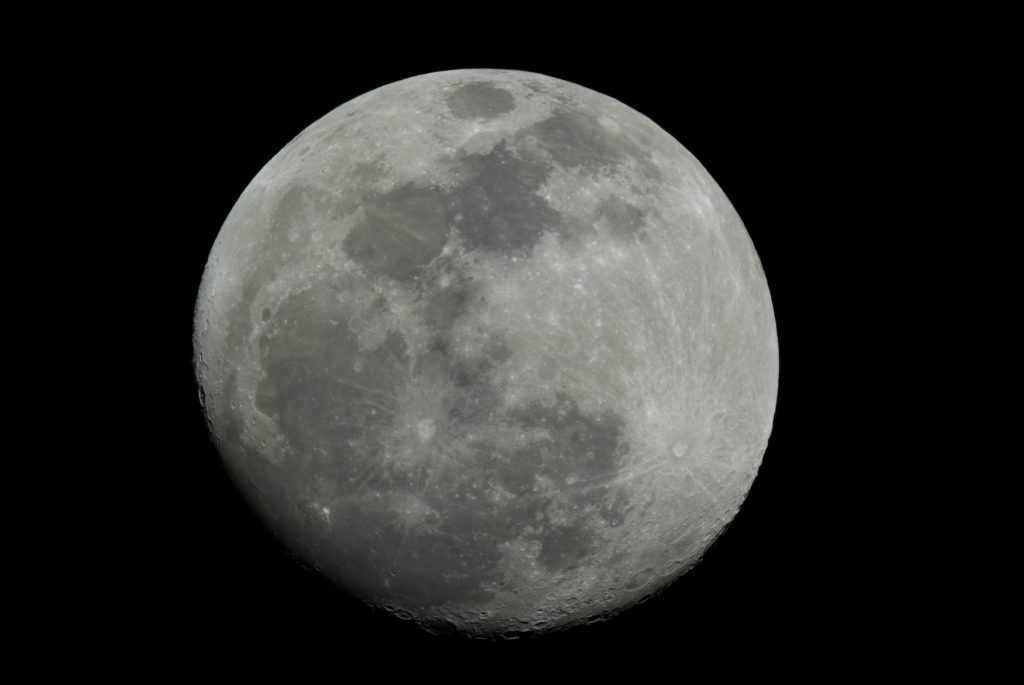
The Moon serves as the Earth’s natural satellite, excluding over 8 thousand man-made satellites orbiting our planet.
When discussing the Earth, it is impossible to overlook a particularly intriguing fact: over 70% of its surface is covered with liquid water resources (there are also polar ice “caps”). There is no other planet in the Solar System that compares to it.
Mars is the fourth planet in our solar system

The red planet is called Mars, which got its name from the Roman god of war due to its reddish surface. Its two moons, Phobos and Deimos, were named after the sons of another war god in ancient Greek mythology – Phobos meaning “fear” and Deimos meaning “terror”.
A year on Mars lasts for 686.98 Earth days. It takes Mars 24 hours, 37 minutes, and 23 seconds to complete one rotation on its axis (sidereal day). The solar day on Mars is 2.5 minutes longer than the stellar day and 2.7% longer than Earth’s.
Characteristics of Mars
- Mars is approximately 4.65 billion years old.
- The mass of Mars is about 6.42-1020 tons, which is equivalent to about 0.107 times the mass of Earth.
- Mars has a volume of about 1.63-1020 m3, which is approximately 0.151 times the volume of Earth.
- The density of Mars is about 3933 kg/m3, which is about 0.714 times the specific gravity of Earth.
- The diameter of Mars is approximately 6752.4 km, which is about 0.531 times the polar diameter of Earth and 6792.4 km, which is about 0.532 times the equatorial diameter of Earth.
- Mars has an orbital velocity of about 24.13 km/sec.
- Mars experiences unique seasons. In the northern hemisphere, there are long, cold spring and summer seasons, while in the southern hemisphere, the seasons are warm and short.
- The temperature on Mars varies greatly, ranging from -153°C in winter at the poles to +20°C. The highest recorded temperature on Mars, obtained by the Mars rover “Spirit,” was +35°C.
The fifth planet from the Sun is Jupiter
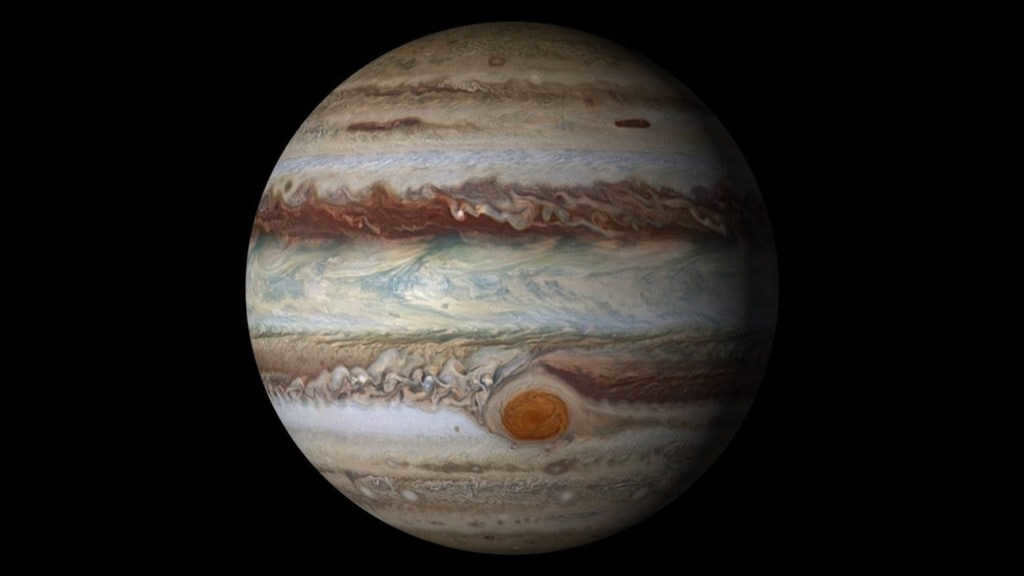

Being the largest planet in the Solar System, Jupiter takes its name from the ancient Roman supreme god.
- It possesses a mass that is 2.5 times (71.16%) greater than all the other planets orbiting our Sun.
- It has a mass that is 318 times greater than that of the Earth.
- Its mass is 1,000 times less than that of the Sun.
- Furthermore, its dimensions are so immense that the Earth appears minuscule in comparison. The equatorial radius measures 71.4 thousand kilometers, which is 11.2 times larger than that of Earth’s.
- A year on Jupiter lasts 12 Earth years, while a day only lasts 10 hours. It has an average distance of 778.6 million kilometers from the Sun.
Fascinating trivia: According to astronomers, it is Saturn, known as the “big brother,” that serves as the guardian of our planet, protecting us from potential cosmic collisions.
Saturn, the sixth planet from the Sun.
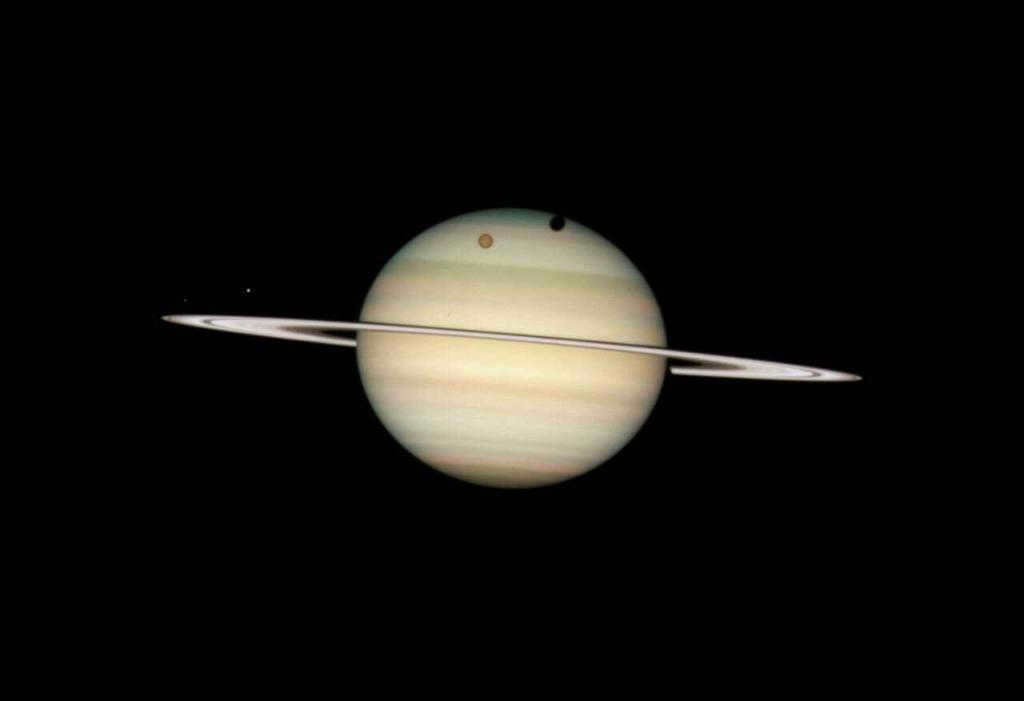
Saturn, the second largest planet in our solar system, takes its name from the ancient Roman god of agriculture. What sets Saturn apart from the other planets is its unique geometric compression of radius:
- At the poles, Saturn has a radius of 54,400 kilometers.
- At the equator, the radius expands to 60,300 kilometers.
- With a mass of 5.68-1023 tons, Saturn is equivalent to 95 times the mass of Earth and accounts for 21.31% of the total mass of all the planets in our solar system.
Here are some key astronomical parameters of Saturn:
- Saturn takes approximately 29.5 years to complete one revolution around the Sun.
- On average, Saturn is located around 1430 million kilometers away from the Sun.
- The speed of rotation around its own axis varies! It is faster at the equator, which can be attributed to the planet’s gas composition. The accepted length of a day is 10 hours and 34 minutes.
Interesting characteristics
- The wind speed can reach up to 1800 km/hour.
- The magnetic field extends up to 1 million kilometers.
- There are 82 satellites.
- It has the most notable rings.
- The Great White Oval is an atmospheric phenomenon that appears every 30 years.
- There are circular northern lights.
- There is a cloudy hexagon at the North Pole that maintains its almost regular shape through 20 years of continuous rotation!
Uranus is the seventh planet in our Solar System.
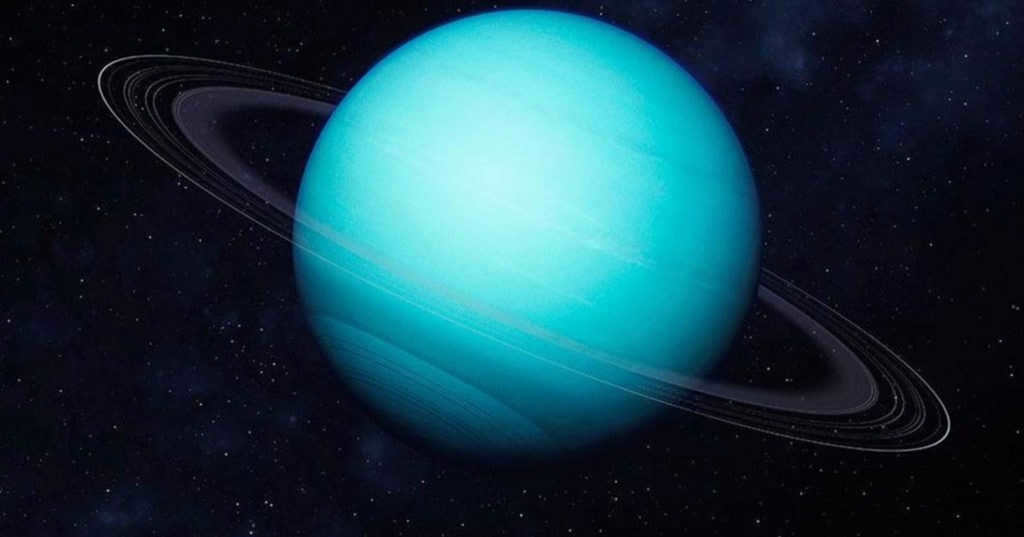
The discovery of the seventh planet in our solar system was made by the English astronomer W. Herschel through a telescope. Initially, it did not have a name, but eventually, it adopted the title of an ancient Greek god. Uranus takes approximately 84 Earth years to complete one orbit around the Sun, and its sidereal day lasts for 17 hours and 14 minutes.
- Uranus accounts for 3.25% of the total planetary mass in our star system.
- Its mass is equivalent to 8.68-10^22 tons, which is about 15.54 times the mass of the Earth.
- Despite being a gas giant, Uranus is the least massive among its counterparts due to its significant ice content.
Neptune, the eighth planet from the Sun, follows Uranus in the planetary lineup.
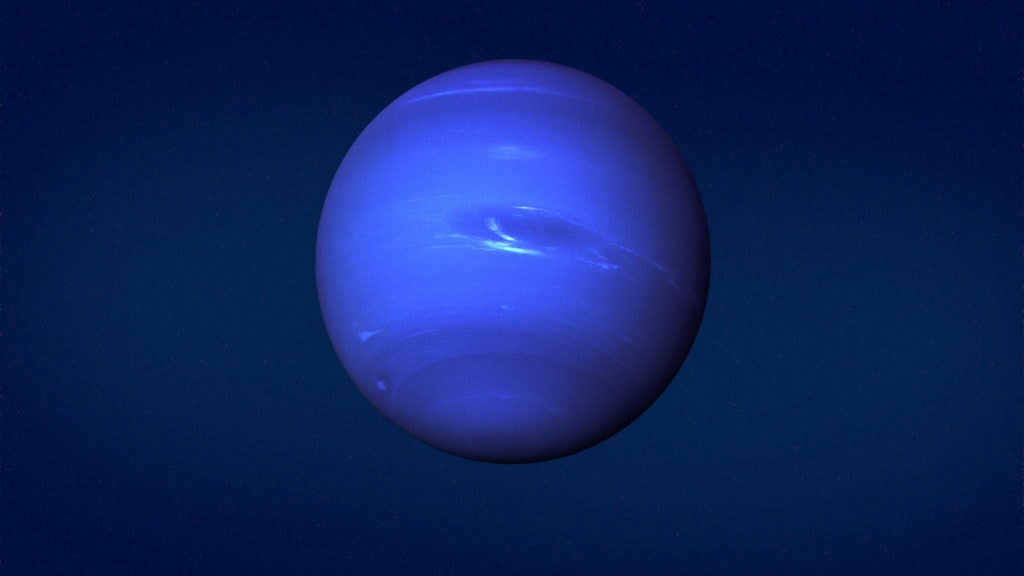

Neptune, which is the farthest planet from the sun, is named after the Roman god of the seas. It takes Neptune almost 165 years to complete one orbit around the sun, and it takes about 16 hours of Earth time for Neptune to complete one rotation on its own axis.
Neptune’s appearance is attributed to the mathematical calculations made by the French astronomer Urbain Le Verrier.
Characteristics of the planet
- Weight – 1.02-1023 tons = 17 times the mass of the Earth = 3.84% of the total mass of the planets in the solar system.
- Size – 49530 km = 4 times the diameter of the Earth.
- It has 5 rings.
- There are 14 satellites orbiting it.
Pluto is classified as a dwarf planet.
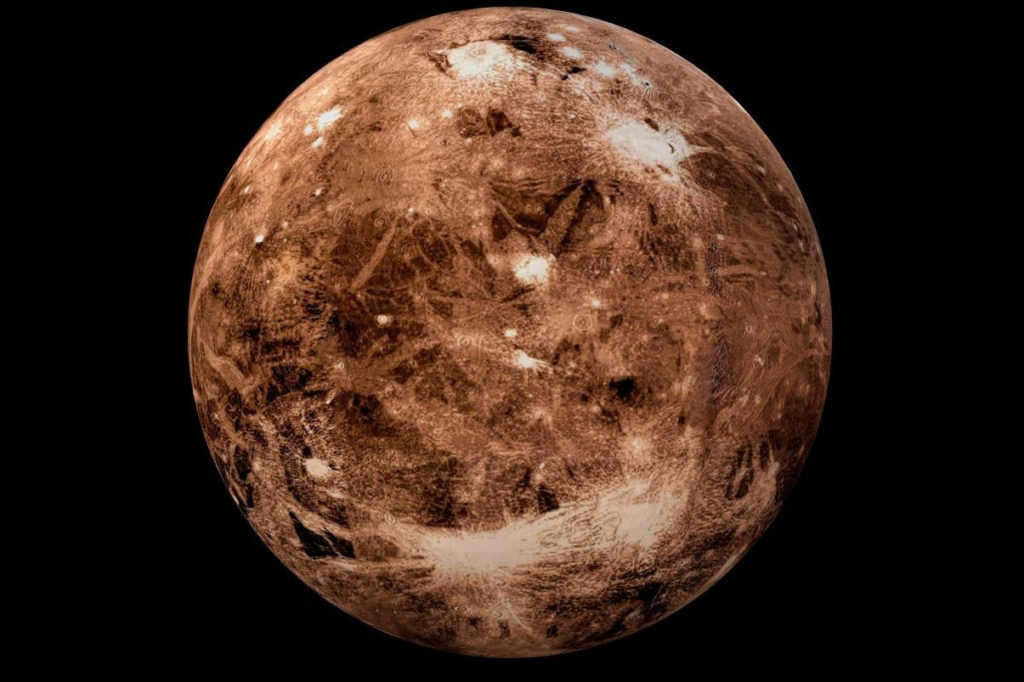
Pluto, the biggest among the dwarf planets, is called after the ancient deity of the realm of the deceased and travels in an opposite direction around the Sun.
It takes Pluto approximately 248 years to finish one revolution. A single day on Pluto lasts for 6.4 Earth days, encompassing both day and night.
Did you know? The name for the ninth planet in our solar system was actually proposed by an eleven-year-old girl named Venice Bernie.
Discovering the Ninth Planet
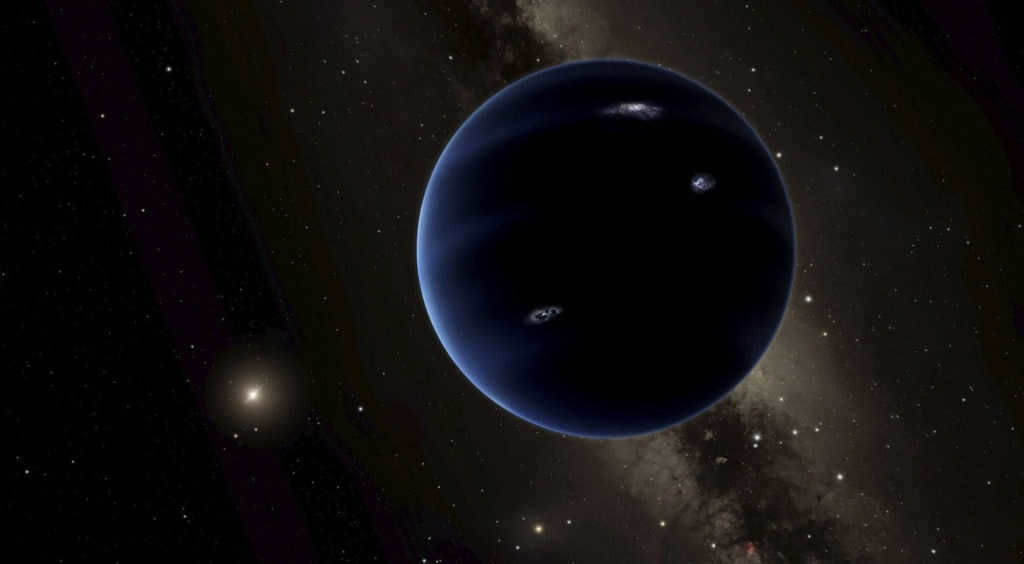
There is a belief that the current list of planets in our solar system is not yet complete. It is speculated that there might be another planet in the scattered disk, which is a remote region of our star system. This hypothetical planet could potentially explain certain anomalies observed in the behavior of trans-Neptunian bodies. This intriguing hypothesis was initially proposed by astronomers C. Trujillo and S. Sheppard in 2014 and further supported by K. Batygin and M. Brown in 2016.
According to this hypothesis, this unknown planet could have a mass 10 times that of Earth and an orbital period around the Sun lasting approximately 20,000 years!
“Discovery” and exploration of the solar system
The investigation and exploration of the celestial bodies that constitute our solar system have always been a source of fascination and wonder for humanity. From ancient civilizations gazing at the night sky to modern scientific missions sent into space, the quest to discover and understand the mysteries of our cosmic neighborhood has been an ongoing endeavor.
The term “discovery” encompasses the act of encountering something new and previously unknown. In the context of space exploration, it refers to the identification and understanding of celestial bodies such as planets, moons, asteroids, and comets. Throughout history, numerous significant discoveries have been made, each contributing to our understanding of the solar system’s composition, structure, and dynamics.
The exploration of the solar system involves the physical journey to various celestial bodies. It includes sending spacecraft, probes, and rovers to conduct scientific experiments, collect data, and capture images. These missions allow scientists to study the geology, atmosphere, magnetic fields, and other characteristics of different planets and moons. They also enable us to investigate the potential for life beyond Earth and understand the conditions necessary for its existence.
One of the most notable examples of solar system exploration is the Apollo program, which successfully landed humans on the Moon for the first time in 1969. This historic achievement not only expanded our knowledge of Earth’s natural satellite but also paved the way for future missions to other planets and moons.
In recent years, there have been numerous advancements in space exploration technology, allowing for more sophisticated missions. For instance, the Mars rovers, Spirit, Opportunity, and Curiosity, have provided valuable insights into the Red Planet’s geology and potential for habitability. Additionally, the Voyager spacecraft, launched in 1977, continue to transmit data from the outer reaches of our solar system, providing unprecedented information about distant planets and their moons.
The ongoing “discovery” and exploration of the solar system are crucial for expanding our understanding of the universe and our place within it. As technology continues to advance, scientists and researchers will continue to push the boundaries of knowledge, uncovering new and exciting insights into the mysteries of our cosmic neighborhood.
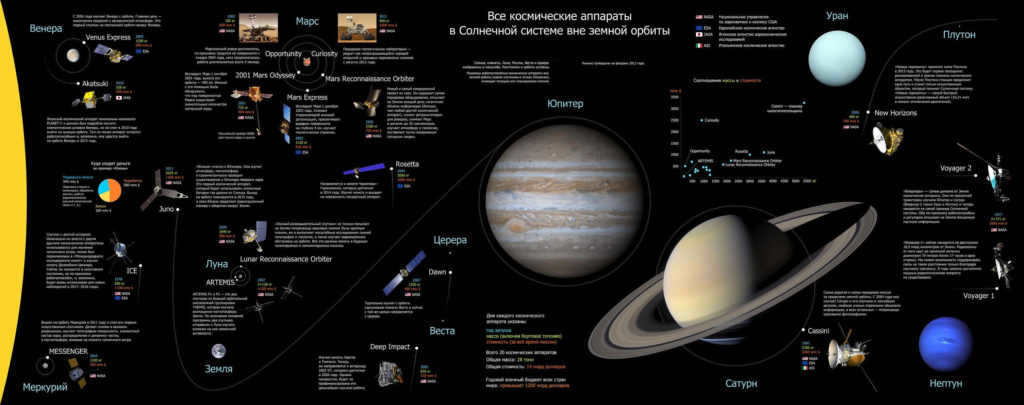
Since ancient times, humanity has been engaged in the exploration of the cosmos. Throughout history, there have been several key milestones in this journey:
- In the time before and at the beginning of the Common Era, astronomers relied solely on their eyesight and the fortunate positioning of celestial objects.
- However, everything changed in 1610 with the invention of the first telescope by the renowned Italian scientist Galileo Galilei.
- On October 4, 1957, a significant moment occurred with the launch of Sputnik-1, the first artificial satellite in human history.
- April 12, 1961 is a momentous date in the annals of our civilization as Yuri Alexeyevich Gagarin became the first person to venture into space.
- Then, on July 21, 1961, Neil Armstrong made history by becoming the first person to set foot on the Moon.
These are the most significant occurrences in the exploration of our star system. Moreover:
- A multitude of spacecraft have been launched.
- Artificial satellites have been created for the planets.
- Lunar rovers and Mars rovers traverse the surface of celestial bodies.
- Powerful telescopes have been deployed in orbit.
- The International Space Station has commenced its operations.
And this is just the start. The Pioneer-10 automatic interplanetary station, which was launched on March 3, 1972, managed to exit the solar system! It might reach the vicinity of the star Aldebaran in a few million years!
Interesting Video about the Planets of the Solar System
If you happen to come across any inaccuracies, kindly select the specific text and press Ctrl+Enter to notify us.

Solar System
While there is still a great deal of the universe left unexplored, the Solar System remains the most accessible area that humanity has some knowledge about. Each planet within the Solar System is a distinct world with its own unique characteristics. So, just how many planets are in the Solar System and what sets them apart?
As of 2019, there are a total of eight planets in the Solar System: Mercury, Venus, Earth, Mars, Jupiter, Saturn, Uranus, and Neptune. However, it is worth noting that Pluto has been classified as a dwarf planet since 2006, but we will delve further into that topic below.
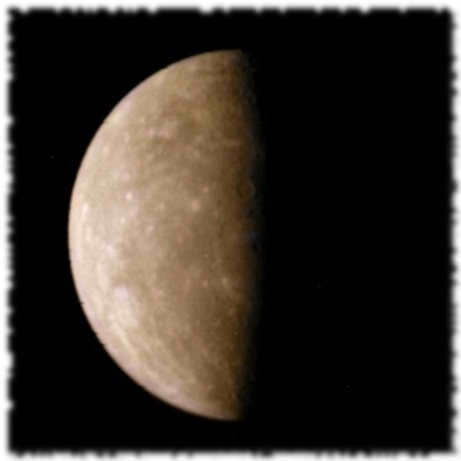
The closest object to the Sun possesses icy deposits, which can be located within perpetually shadowed craters that are shielded from direct sunlight. Experts hypothesize that these frozen reserves could have been delivered to the planet by comets. While Mercury ranks second in terms of temperature, with Venus taking the lead, its surface is notably adorned with a greater abundance of craters compared to other celestial bodies. The precise date of Mercury’s discovery remains unknown, although references to it can be found in ancient Sumerian texts.
Fascinatingly, the MESSENGER spacecraft has made the remarkable discovery of not only ice at the planet’s North Pole, but also organic compounds that serve as the building blocks for the origin of life. Despite being too hot and lacking a substantial atmosphere for life to flourish in the conventional sense, these findings provide insight into the distribution of these fundamental elements throughout the solar system.
Venus: a celestial stunner
It stands out as the most radiant entity in the nocturnal expanse following our moon. The planet’s terrain remains concealed from direct scrutiny as a result of its dense cloud cover, rendering the Sun invisible from its surface. Venus showcases fairly sizable craters, with diameters exceeding two kilometers. This phenomenon is attributed to its thick atmosphere, which permits passage solely for large objects, while smaller ones are incinerated. Although devoid of water, the planet boasts a multitude of volcanoes, some of which have been observed to be active.
Earth: the solitary recognized inhabitable planet

The planet that provides shelter for humanity is the third planet from the Sun. In ancient times, Earth was perceived as the center of the universe. It possesses a powerful magnetic field and is also the most dense planet, second only to Mercury. This characteristic played a crucial role in the emergence of life.
Fascinating fact Out of all the celestial bodies, our planet is the only one that does not bear the name of an ancient deity.

Mars is ranked fourth in terms of its distance from the Sun. It is commonly referred to as the Red Planet due to the oxidation of iron, which gives it its distinctive color. Essentially, the surface of Mars has undergone a process similar to rusting. The tallest mountain in the entire solar system, Olympus, stands at a towering height of 21 kilometers on Mars. On this celestial body, dust storms are constantly raging, creating a dynamic environment. Water is only found in the form of ice on Mars.
Many experts in cosmology believe that Mars once possessed an atmosphere and a hydrosphere. With the presence of water and air, the possibility of life existing on Mars cannot be ruled out. It is difficult to determine exactly what caused the planet to become dry and cold as it is today. It is speculated that a magnetic disturbance or a collision with a large asteroid may have been responsible for this transformation.
Jupiter: the colossal gas giant

Jupiter, the massive planet in our solar system, boasts a weight that is twice the combined mass of all the other planets. It holds the record for having the shortest day, with an orbital period of only 9 hours and 55 minutes. As of the year 2019, scientists have discovered a total of 79 satellites orbiting around this giant planet. Among them, Ganymede stands out as the largest known planetary satellite, surpassing all others in size. One of the most iconic features of Jupiter is the Great Red Spot, a massive atmospheric vortex that holds the title for being the largest of its kind in our entire solar system. In fact, its size is so immense that it exceeds the area of three Earths combined.
Saturn: The Ruler of the Rings

The planet known as the sixth in our solar system is renowned for its remarkable ring system composed of ice and dust particles. This extraordinary feature was initially observed by Galileo in the year 1610. Saturn, in addition, belongs to the category of gas giants and primarily consists of hydrogen.
Fascinating trivia: Researchers suggest that Titan, the largest moon of Saturn, might possess the necessary conditions to support life. However, the lifeforms on Titan would likely have distinct characteristics compared to those found on Earth.
Uranus: the “rolling” planet
Ranked seventh in the solar system, Uranus possesses a distinctive characteristic – an axis tilt of 98 degrees, which essentially means it is positioned “on its side” and thus appears to “roll” in its orbit. Taking 84 Earth years to complete one orbit, Uranus also showcases a set of rings, although they may not be as prominent as Saturn’s, they are still more intricate compared to the relatively simple ones found around Jupiter.
Neptune: an icy community
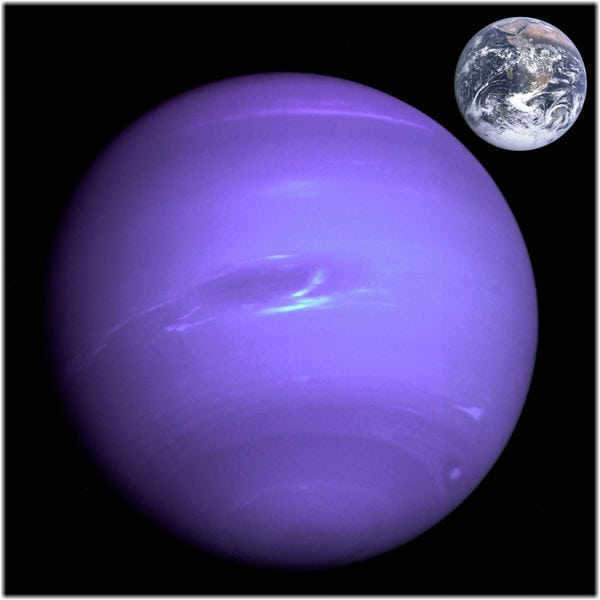
Neptune is located at the most distant point from the Sun. This planet has a volatile weather system and powerful winds, reaching speeds of up to 1770 km/h. Among its 14 moons, Triton is believed to be the most frigid place ever discovered, with temperatures averaging at -235 degrees Celsius.
What is the reason behind having eight planets in the solar system instead of nine?

There was a time when the solar system consisted of nine planets, which is a memory shared by many people. However, in 2006, a decision was made to exclude Pluto from the list. This decision was based on the fact that Pluto did not meet all the necessary criteria, particularly its lack of a sufficiently strong gravitational field. As a result, Pluto is now classified as a dwarf planet.
Interesting video about the number of planets in the solar system
If you happen to come across any mistakes, kindly select the text and hit Ctrl+Enter.


Outer Space
The Sun possesses a substantial gravitational pull, which keeps the planets in close proximity, forming a cohesive system. The planets orbit around the Sun and possess distinct characteristics based on their positions. Researchers are continuously investigating the solar system and frequently unveil astounding findings that enhance our comprehension of the cosmos’ structure.
What is the Definition of the Solar System?
The solar system is a collection of planets that orbit around a central star. Scientists have determined that it has an estimated age of approximately 4.57 billion years and originated from the gravitational collapse of a gas and dust cloud.
At the center of this system lies a prominent star known as the Sun, which exerts gravitational force on the planets and other celestial bodies, causing them to orbit at specific distances. The Sun is significantly larger in size compared to other objects within its gravitational influence.
Did you know? The Sun possesses such immense mass that the combined weight of all the other planets in the solar system amounts to only 0.0014% of its total mass.
Within the solar system, aside from the central star, there are eight main planets as well as five dwarf planets. The solar system is situated within the Milky Way galaxy, specifically in the Orion arm.
Origins
The beginning or starting point of something, often referred to as its origins, can provide valuable insights into its development and evolution. Understanding the origins of a concept, idea, or phenomenon can help us trace its path and better comprehend its current state. By examining the origins, we can uncover the foundational principles and factors that have shaped its existence. Whether it be the origins of a language, a cultural tradition, a scientific theory, or a technological innovation, exploring its roots can deepen our understanding and appreciation for its significance.
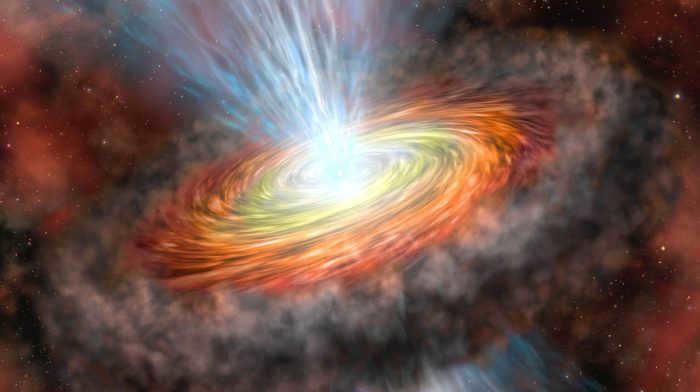
Considering the solar system’s age of billions of years, speculation is necessary to understand its origins. The most widely accepted theory is the nebular theory proposed by 18th-century scientists Laplace, Kant, and Swedenborg. This theory suggests that the system formed through the gravitational collapse of a portion of a massive cloud composed of gas and dust. Over time, this hypothesis has been reinforced by data obtained from space exploration.

Now we can describe the process of the formation of the solar system using the following steps:
- Initially, there existed a cloud in this part of the universe that contained helium, hydrogen, and other elements acquired from the explosions of older stars. A portion of this cloud started to condense, becoming the center of a gravitational collapse. It gradually began to attract surrounding matter.
- As the substances were attracted, the size of the cloud started to decrease, while the rotation speed increased. Eventually, it took on the form of a disk.
- As the cloud was compressed, the density of particles per unit volume increased, leading to a gradual heating of the substance due to frequent molecule collisions.
- When the core of gravitational collapse reached temperatures of several thousand kelvins, it began to emit light, indicating the formation of a protostar. Simultaneously, other compressions started appearing in various regions of the disk, which would eventually become gravitational centers for planet formation.
- The final stage of solar system formation commenced when the protostar’s core temperature surpassed several million kelvin. At this point, helium and hydrogen underwent thermonuclear fusion, resulting in the birth of a fully-fledged star. The remaining material in the disk gradually coalesced to form planets, which then started orbiting the Sun in the same direction, all lying on the same plane.
This process spanned an extensive period, and scientists can only speculate about the duration it took for the solar system to take shape.
The arrangement of the solar system
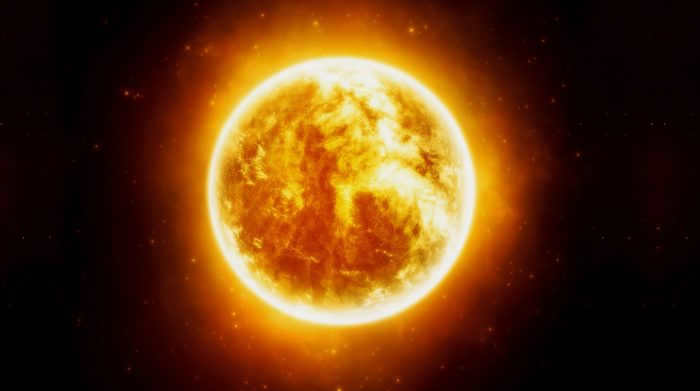
The center of the system is occupied by the Sun, composed of hydrogen and helium. It has a surface temperature of approximately 6000 degrees Celsius and is significantly larger than other celestial bodies in its gravitational field. This star is classified as a yellow dwarf.
Did you know?: The Sun exerts its gravitational pull on objects up to a distance of two light-years, which is equivalent to about 18.9 trillion kilometers.
Revolving around the star at varying distances are planets, which scientists categorize into two groups: terrestrial and gas giants.
Terrestrial Group Planets
The terrestrial group is positioned nearer to the Sun. Its planets possess a rocky composition and possess a higher density, resulting in their smaller size compared to the gas giants.
Mercury

Mercury is the smallest planet in our solar system and is also the closest to the Sun. With a radius of only 2440 km, it is named after the god of commerce. Its surface has a gray color, leading many to compare it to the Moon. Unlike other planets, Mercury does not have any satellites orbiting around it. Additionally, its atmosphere is almost completely rarefied due to the strong solar winds it experiences.
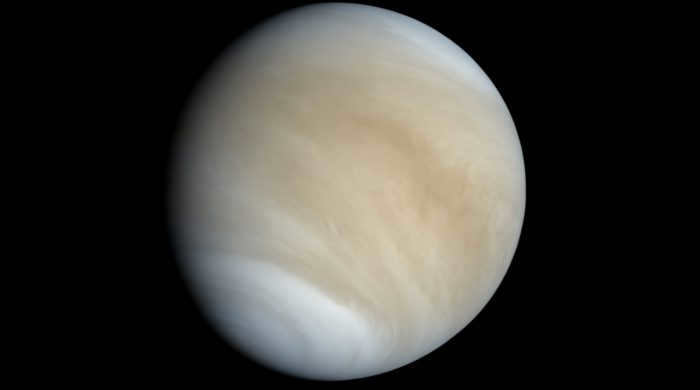
Venus is the second planet in our solar system, and it is named after the ancient Roman goddess of love. One of its distinctive features is that it does not have any natural satellites, and its atmosphere has a high concentration of carbon dioxide. The radius of Venus is almost the same as Earth’s, measuring at 6051 km, which is only 5% smaller. Because of this similarity, Venus and Earth are often referred to as “sister planets”. However, despite their close size, Venus has a very different appearance, resembling a milky-colored sphere. Its surface is mostly composed of solidified lava, with only a few craters left by meteorites.
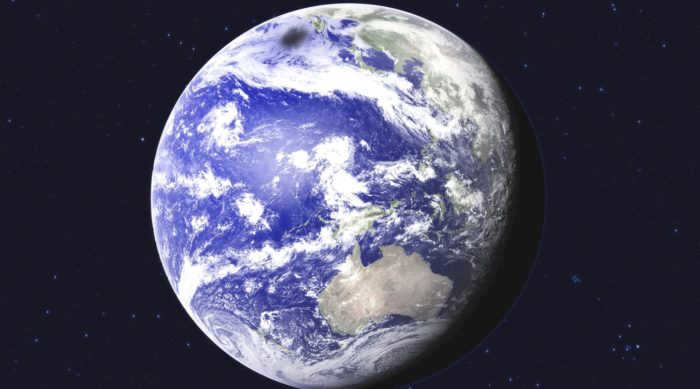
Being the third celestial body from the Sun, Earth stands out as the sole planet that boasts extensive expanses of water. Its exceptional climate and abundant resources make it the exclusive hub of life within the solar system. With a radius measuring 6378 kilometers, Earth holds a unique position in the cosmic realm.
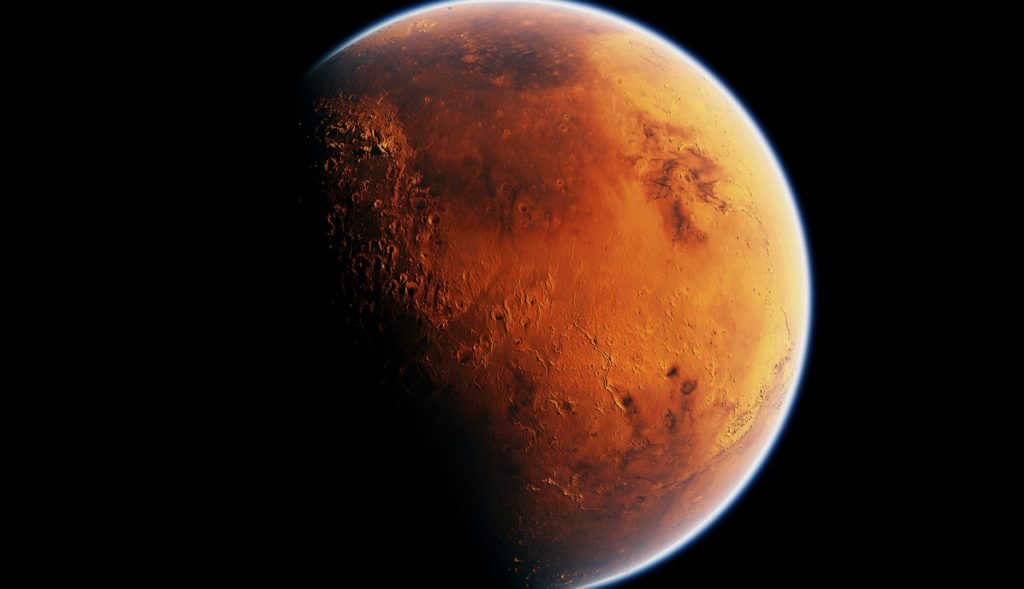
The “Red” planet, Mars, is the most distant planet from the Sun in the Earth group. It is also the second smallest planet, with a radius of 3,396 kilometers. Its surface is primarily composed of sandy and rocky terrains, which are divided into light and dark regions known as continents and seas. Mars has become a focal point of scientific exploration in the 21st century, as it is relatively accessible. Regular missions are sent to Mars to collect valuable data using Mars rovers.
The Earth group consists of four gas giants positioned at a greater distance from the Sun compared to the other planets. Their immense size is a result of their low density and significant amounts of gaseous matter in their composition.
Jupiter
Jupiter is the largest planet in our solar system. It is a gas giant, composed mostly of hydrogen and helium. It is named after the Roman god Jupiter, the king of the gods.
Jupiter has a diameter of about 86,881 miles (139,822 kilometers), which is more than 11 times the diameter of Earth. It is so big that more than 1,300 Earths could fit inside it. Despite its size, Jupiter is not the most massive planet in our solar system. That title goes to Saturn.
One of the most distinctive features of Jupiter is its Great Red Spot, a giant storm that has been raging for at least 400 years. The storm is so large that multiple Earths could fit inside it. Scientists are still not sure what causes the storm to persist for so long.
Jupiter also has a strong magnetic field, which is about 20,000 times stronger than Earth’s. This magnetic field creates a powerful radiation belt around the planet, which can be dangerous for spacecraft.
Jupiter has a total of 79 known moons, the largest of which is Ganymede. Ganymede is even larger than the planet Mercury. Some of Jupiter’s other moons, such as Europa and Io, are thought to have subsurface oceans and may have the potential to support life.
Overall, Jupiter is a fascinating and mysterious planet that continues to captivate scientists and astronomers alike. Its size, storms, magnetic field, and moons make it a truly unique and awe-inspiring celestial object.

Jupiter is the largest planet in our solar system. It has a radius of 69,912 kilometers, which is almost 20 times larger than that of Earth. The exact composition of Jupiter is still unknown to scientists, but it is known that it contains more xenon, argon, and krypton compared to the Sun. Jupiter also has 67 satellites, some of which are similar in size to planets. For instance, Ganymede is 8% larger than Mercury and Io has its own atmosphere. There is also a theory suggesting that Jupiter was initially meant to become a star, but it remained a planet during its development stage.
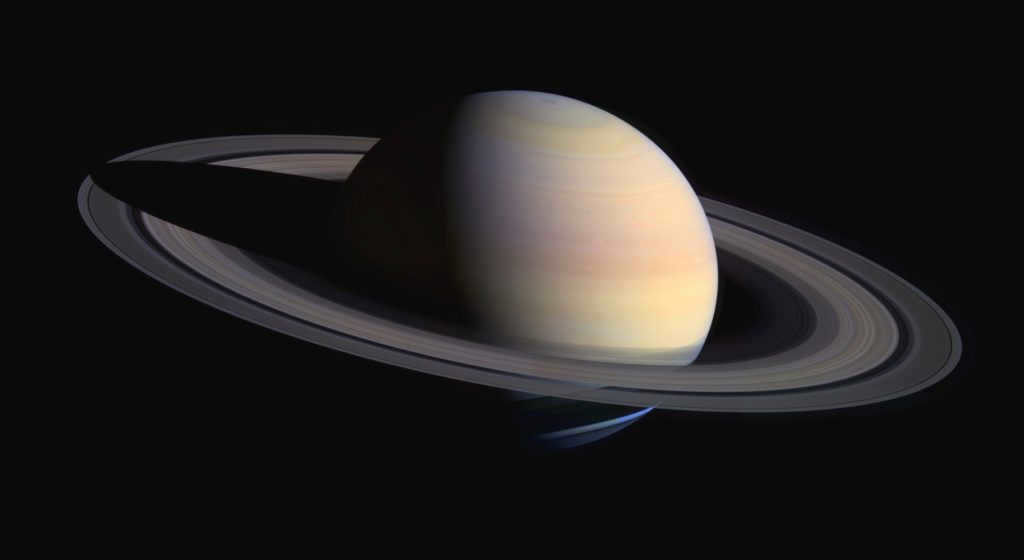
Saturn, the sixth planet in our solar system, is well-known for its magnificent rings composed of a combination of ice and stony meteoroids. With a radius of 57,360 kilometers, the surface composition of Saturn is still not fully understood by scientists. However, they have discovered that it contains almost the same chemical elements as the Sun. In addition, Saturn is accompanied by 62 satellites.
Fascinating fact: Recent studies have revealed that other gas giants also possess rings, although they may not be as prominent as Saturn’s. The exact reasons behind the formation of these rings are still a topic of speculation.
Uranus
can be paraphrased as follows:
The planet Uranus
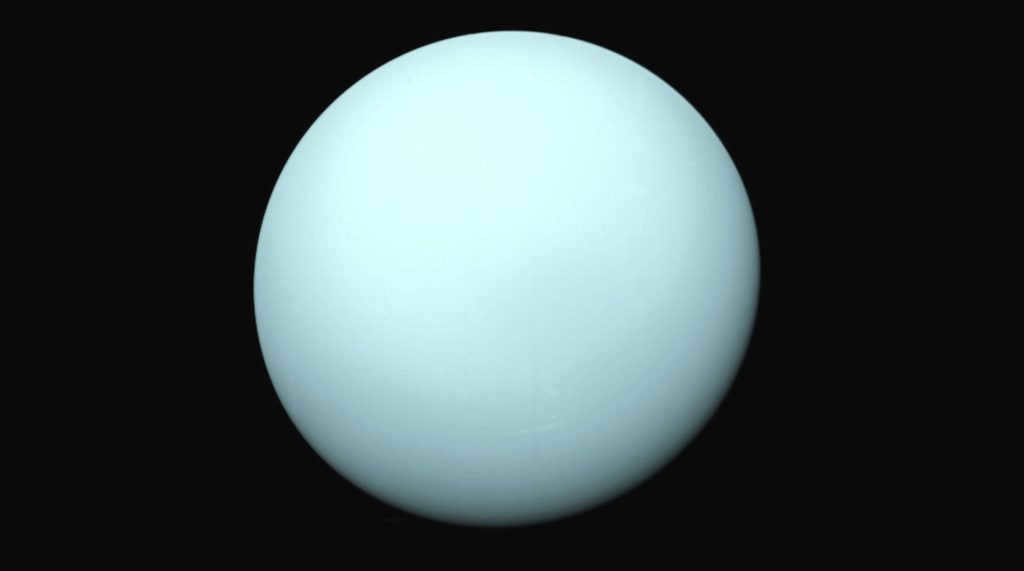
Uranus, the third largest planet in our solar system, has a radius measuring 25267 kilometers. It boasts the title of the coldest planet, with temperatures plummeting to -230 degrees Celsius. One of its most distinctive features is its tilted axis of rotation, giving it the appearance of a rolling ball. The planet’s surface is primarily composed of ice, with traces of helium and hydrogen.
Neptune
is a planet in our solar system. It is the eighth and farthest known planet from the Sun. It is the fourth-largest planet by diameter and the third-largest by mass. It is named after the Roman god of the sea. Neptune is similar in composition to Uranus, and both have bulk chemical compositions which differ from that of the larger gas giants Jupiter and Saturn.

Instead of being discovered through direct observation, the eighth planet from the Sun was actually detected through mathematical calculations. By studying irregularities in the movement of Uranus, scientists postulated the existence of another large celestial body. Neptune has a radius measuring 24547 kilometers. Its surface is comparable to Uranus, but it boasts the strongest winds in the entire solar system, reaching speeds of up to 260 m/s.
Order in the Orbit

Each planet has its own unique path around the Sun. The amount of time it takes for a planet to complete one full orbit and return to its starting point is known as a year, typically measured in Earth days.
- Mercury, being the closest planet to the Sun, has the shortest orbit and completes a year in just 88 days;
- Venus takes 224 days to complete a full revolution around the Sun;
- Earth has a year consisting of 365 days;
- Mars, the fourth planet from the Sun, takes nearly twice as long as Earth to complete its orbit, with a year lasting 687 days;
- Jupiter, the closest gas giant to the Sun, has the longest year of all the planets, taking 4332 days to complete one full orbit.
- Saturn takes approximately 10759 days to complete one full revolution around the Sun – that’s equivalent to almost 30 Earth years;
- Uranus, being one of the farthest planets from the Sun, completes a full circle in about 30685 days;
- Neptune, with the largest orbit among all the planets, has to travel the greatest distance during its year, which lasts approximately 60190 days – that’s almost 165 Earth years.
Additionally, each planet has its own rotation speed, resulting in different lengths of day on each planet.
Is Pluto considered a member of the Solar System or not?

For centuries, scientists have been postulating the existence of a ninth planet in our solar system, positioned at the furthest distance from the Sun. In 1930, Clyde Tombaugh, a 23-year-old employee at the Mount Wilson Observatory, successfully uncovered Pluto. This achievement was made possible through his systematic photographing of the night sky and diligent search for any moving celestial bodies. Ultimately, the object was found within the Kuiper belt region.
That same year, Pluto was officially designated as the ninth planet. Initially, it was estimated to be similar in size to Earth due to limited data. However, subsequent research revealed that Pluto has a radius of only 2376 km, making it significantly smaller than previously believed, with a mass six times less than that of the Moon.
Fascinating trivia: The area of Pluto is only 0.6 million square kilometers smaller than that of Russia, amounting to 17.1 million square kilometers.
The planet’s surface is predominantly composed of rock and ice, much like other bodies in the Kuiper Belt. Pluto is accompanied by five satellites. Its orbit around the Sun is elliptical, and at its closest point, it is nearer to the star than Neptune, while at its farthest distance, it is 7.4 billion kilometers away.
Further exploration of the Kuiper Belt has led scientists to discover several other small planets that are not significantly different in size from Pluto. In 2006, it was decided to classify them as dwarf planets. Since then, Pluto has officially lost its status as the ninth planet of the solar system. However, some scientists still argue that it should be reinstated as a major planet instead of a dwarf planet.
Additional items
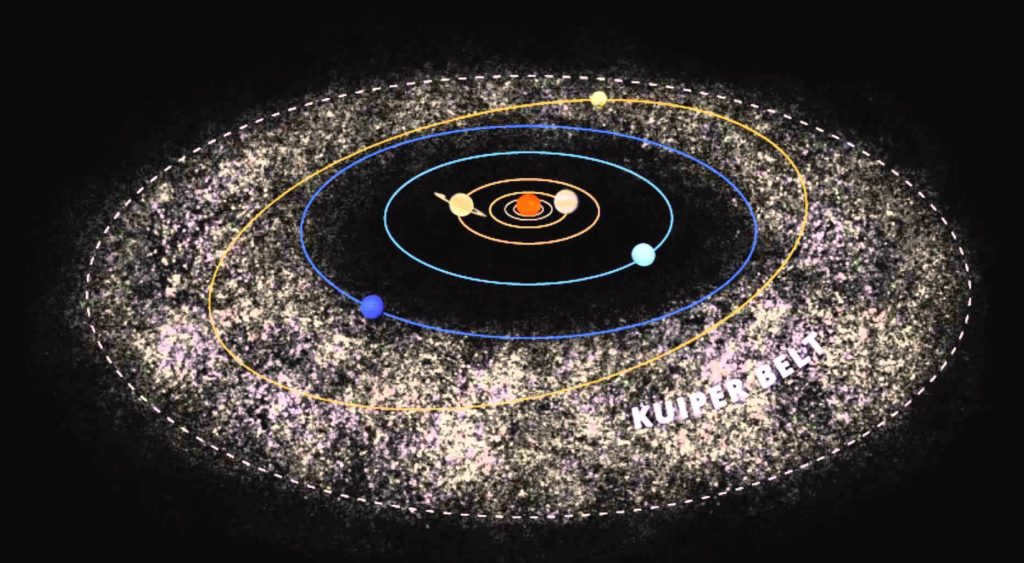
In addition to the Sun and planets, there are various other objects that exist within the solar system. These include:
- Dwarf planets, which are smaller in size compared to the major planets;
- The Kuiper belt – a disk-shaped region that contains numerous icy bodies, situated beyond the orbit of Neptune;
- The Oort cloud – a cluster of icy conglomerates;
- Comets – formations composed of gas, dust, and ice that move through space;
- Asteroids – rock formations that travel between Mars and Jupiter;
- Meteorites – small solid objects that fall to Earth, transforming into meteors upon entering the atmosphere and disintegrating before reaching the planet’s surface.
Occasionally, asteroids and comets from neighboring galaxies can enter the Solar System, although this occurrence is quite rare.
The Oort Cloud beyond our Solar System
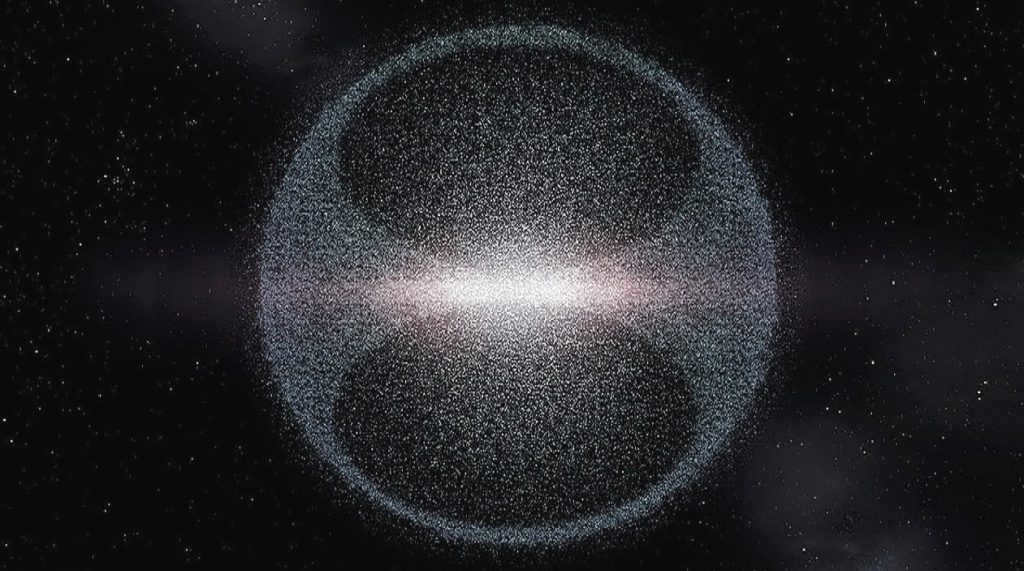
The Oort Cloud can be found surrounding the Solar System along with the Kuiper Belt. It starts at a distance of 2000 to 5000 a.u. from the Sun and extends to 100000 to 200000 a.u. To facilitate research, scientists have divided the area into inner and outer sections.
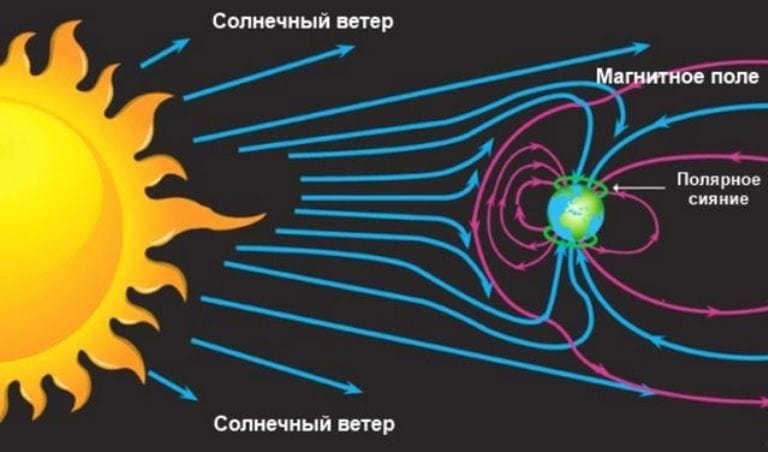
There is a common misconception among many individuals that the space between planets is empty. However, this belief is inaccurate. The Sun constantly releases charged particles that travel through space at a rapid speed of 1.5 million km/h, creating what is known as the heliosphere. This stream of particles is referred to as the solar wind. If a celestial body lacks its own magnetic field to retain its atmosphere, these charged particles will essentially strip it away. Such is the unfortunate destiny of both Mars and Venus.
Space Exploration and the Search for New Homes
In the 20th century, humanity embarked on an exciting journey of space exploration. Gone were the days of merely observing the stars through telescopes; now, satellites, shuttles, and rockets were launched into space. Alongside this scientific progress, researchers also began the search for planets that could potentially sustain life. This quest for a new home in the cosmos is not just a dream but a necessity, as the Earth faces the constant threat of cataclysms.
Even in the previous century, probes were sent to various planets, transmitting valuable information about their journeys. These missions have provided insights into the structure and unique characteristics of celestial objects within our solar system.
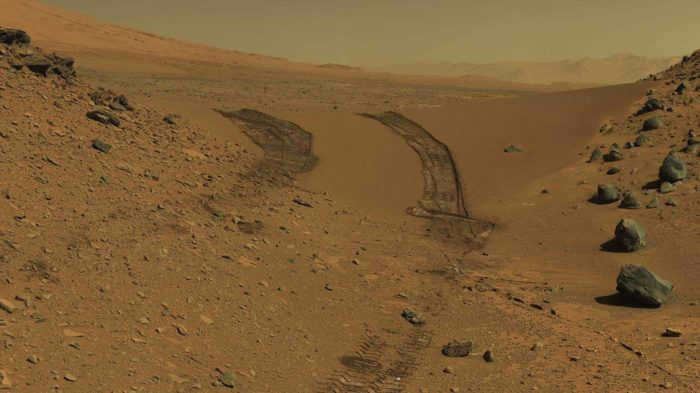
In the 21st century, it has become commonplace to send rovers to the moon and Mars in search of life and other extraordinary discoveries. However, at present, human space travel is still in its early stages, and the idea of relocating to another planet is not yet a topic of discussion. Furthermore, most of the celestial bodies in our solar system are not suitable for sustaining life.
What keeps the solar system in balance?
In the vast expanse of space, the solar system remains remarkably stable. The planets, each following its own unique orbit, gracefully revolve around the Sun without ever colliding. This delicate dance is made possible by the unyielding force of gravity, as dictated by the law of universal gravitation. The continuous pull of the Sun’s gravity keeps the planets in check, preventing any chaotic encounters. Additionally, the absence of friction in the vacuum of space allows the planets to maintain a constant speed, ensuring the longevity and stability of the solar system for countless billions of years.
Position of the Earth

The Earth occupies a unique position in the solar system, being the birthplace of life. This planet orbits the star in an elliptical path. The farthest distance between the Earth and the Sun, known as aphelion, is 152 million km, while the closest distance, known as perigee, is 147 million km.
Did you know? The Earth reaches aphelion in June and perigee in January during its journey. It is at the intersection of these points that a stable cooling or warming of the planet can be observed.
The position of our solar system in the Milky Way
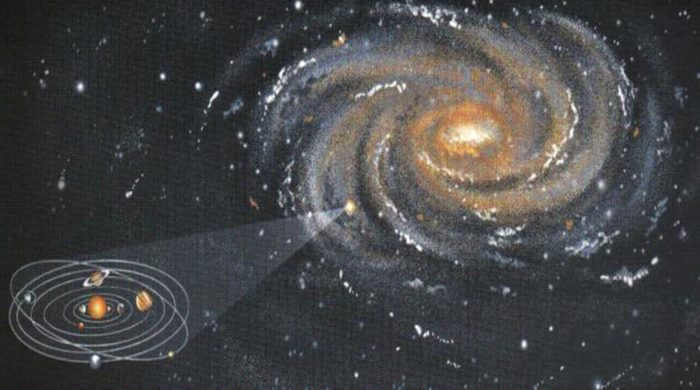
During the medieval era, individuals held the belief that the Earth occupied the central position in the universe. Given the limited understanding of the vastness of outer space during that time, this assumption seemed reasonable. Subsequently, it was discovered that our planet is merely a constituent part of the Solar System, which includes a colossal star at its core. Furthermore, it was later revealed that the Solar System is also just a fragment of a massive galaxy called the Milky Way, which is one of numerous galaxies present in the universe.
Scientists have created a comprehensive depiction of the Milky Way, encompassing all known boundaries, with a total length of approximately 100,000 light years. For the sake of convenience, the galaxy is represented as a flattened disk. The solar system is positioned at a slanted angle, approximately 28,000 light-years away from the galactic center.
Exploring the solar system
Since the mid-20th century, there have been active efforts to investigate the planets within our solar system. In 1957, the Soviet Union successfully launched Sputnik 1 into orbit around Earth, where it spent several months gathering valuable data about our planet.
Throughout the following two decades, leading up to the 1980s, humans sent Voyager spacecraft to most of the planets in our system, capturing numerous up-close images. These images proved instrumental in providing detailed descriptions of these celestial bodies and studying their compositions.
Presently, scientists are inundated with a wealth of information about the planets in our solar system on a daily basis, transmitted by a multitude of satellites.
What is the reason for the planets’ orbits being situated in a common plane?
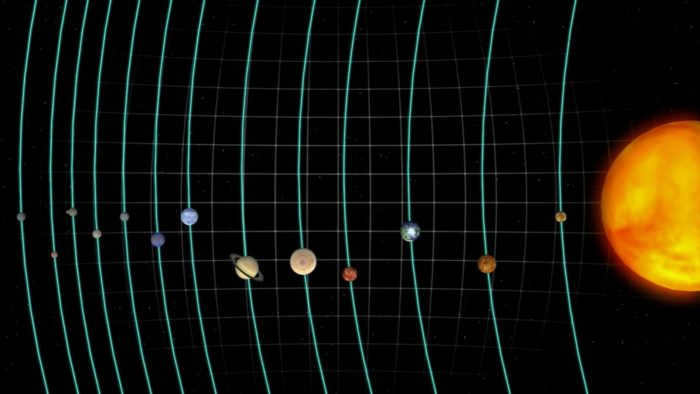
In the solar system, both the star and the planets are situated on a common plane. However, there are a few exceptions where the orbits of certain planets are slightly inclined. Scientists hypothesize that this disparity in orbital alignment is a result of the planets forming simultaneously from the same cosmic matter.
During the gravitational collapse that gave rise to the solar system, the gaseous cloud gradually condensed and transformed into a spinning disk. Consequently, as the nascent planets began to take shape, they were already positioned on this shared plane.
Ptolemy, the ancient Greek astronomer, was the initial person to propose that the planets and the Sun do not remain stationary, but rather revolve around one another. Nevertheless, because of a deficiency in technology and understanding, the scientist held the belief that all celestial bodies revolve around the Earth.
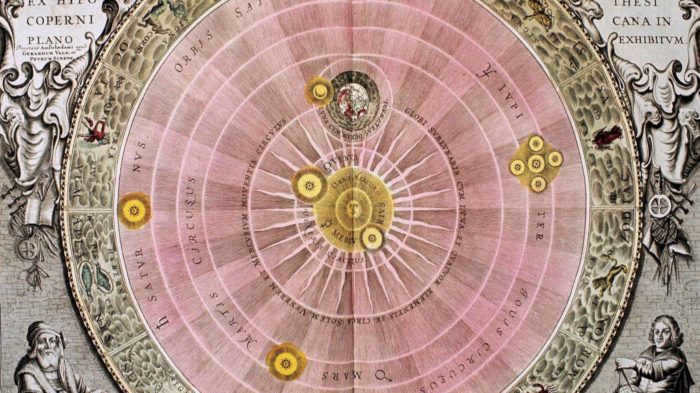
The theory proposing that the motion of the planets revolves around the Sun was initially proposed by Nicolaus Copernicus. He constructed his own model of the solar system and documented his findings in his work “On the Rotation of the Celestial Spheres”. This publication was released in 1543 in Nuremberg. Later on, Kepler provided evidence that the planetary orbits are not perfectly circular, but instead follow an elliptical path. In 1687, Newton formulated the law of universal gravitation, which offered an explanation for the interaction between the planets and the Sun.
Fascinating fact: Newton’s law played a crucial role in demonstrating that the Earth’s tides are influenced by the gravitational pull of the Moon.
Nowadays, people possess sufficient knowledge and technology to accurately forecast the precise trajectory of any planet. It is based on this data that rockets and satellites are launched, with the objective of intersecting the target at a specific point in space and at a predetermined time.
Fascinating video showcasing the Solar System
If you happen to come across any errors, kindly highlight the text fragment and press Ctrl+Enter.
The solar system encompasses the entirety of the central star, which is the Sun, along with the celestial bodies that revolve around it.
The solar system comprises:
- The Sun (the sole star within the solar system);
- 8 planets (including Earth);
- 415 satellites;
- tens or hundreds of thousands of diverse small bodies (such as comets, meteoric bodies, cosmic dust, etc.).
The order of the planets from the Sun is as follows:
- The first planet is Mercury;
- The second planet is Venus;
- The third planet is Earth;
- The fourth planet is Mars;
- The fifth planet is Jupiter;
- The sixth planet is Saturn;
- The seventh planet is Uranus;
- The eighth planet (a giant planet) is Neptune;
- (Formerly considered the ninth planet, the farthest planet from the Sun, but in 2006 it was reclassified as a “dwarf planet”) – Pluto.
The planets in the solar system are categorized into groups:
Inner planets (Earth-group planets):
Outer planets (giant planets):
In 2006, a new type of object in the solar system called “dwarf planets” was introduced. These include:
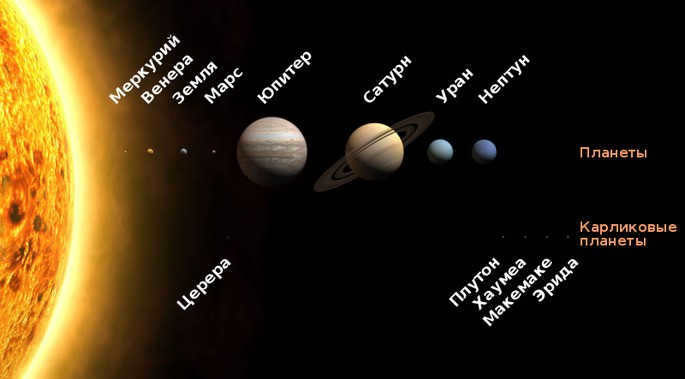
Terrestrial planets or Earth-like planets
An Earth-like planet refers to a celestial object composed primarily of silicate rocks (specifically, silicon dioxide-based) or metals, and possessing a solid outer layer.
These planets are situated in closer proximity to the Sun. Included in this category are Mercury, Venus, Earth, and Mars. All of them exhibit relatively low masses and sizes.
The Earth-like planets also demonstrate a lack of moons or possess only a few moons:
The planet nearest to the Sun is Mercury. Its average distance from the Sun is 57.9 million kilometers, although at times this distance can be as short as 46 million kilometers, or as long as 69.8 million kilometers.
Mercury is the smallest planet in our solar system. In 2012, scientists made an interesting discovery – they found evidence of organic material on Mercury.
Out of all the terrestrial planets, Earth is the largest.
If you want to learn more about each planet in our solar system, keep reading.
Outer planets: the giants
In our solar system, the Sun is the largest celestial body. It is followed by the giant planets: Jupiter, Saturn, Uranus, and Neptune. These planets are known as gas giants.
A gas giant is a massive planet primarily composed of gases like hydrogen and helium, with a relatively small solid core.
The outer planets are located farther from the Sun compared to the inner planets.
Unlike rocky planets such as Earth, gas giants lack a distinct surface. There is no clear boundary between their atmosphere and their surface, making it impossible to land on these planets.
Ice giants
Ice giants are a separate class of gas giants in the solar system. The two ice giants in our solar system are Uranus and Neptune.
Unlike Jupiter and Saturn, which are mostly composed of hydrogen and helium, the ice giants contain a significant amount of ice. Uranus has temperatures that can reach as low as -220ºC, while Neptune has an average temperature of around -230ºC.
Jupiter, on the other hand, is the largest planet in our solar system.
The dimensions of the celestial bodies in our solar system
Provided below is information sourced from NASA, detailing the estimated radii of the eight planets in our solar system in ascending order, accompanied by the respective percentage of radius relative to Earth, rounded to the nearest whole number.
| 2440 km; | 38% compared to the size of Earth; |
| 3390 km; | 53% compared to the size of Earth; |
| 6052 kilometers; | 95% compared to the size of Earth; |
| 6371 km; | |
| 24,622 km; | 388% larger than Earth; |
| 25,362 km; | 400% larger than Earth; |
| 58,232 km; | 945% larger than Earth; |
| 69,911 kilometers; | 1120% larger than Earth. |
Our galaxy
The Milky Way, our galaxy, is known as the Milky Way. Scientists have determined that the Milky Way is a spiral system that spans approximately 100,000 light-years in diameter and is about 1 light-year thick.
Furthermore, their calculations suggest that it contains between 150-200 billion stars as well as an immense variety of other celestial objects.

Ways to witness the beauty of the Milky Way
In theory, the Milky Way can be observed all year round, regardless of location. However, the optimal time to see it is between mid-March and mid-October.
Due to light pollution, it is impossible to see the Milky Way from urban areas or even small towns. That is why it is essential to venture as far away from populated regions as possible.

